|
In the Philippines, I met an old friend, Martin (from my visit to the UK), who introduced me to Michael Cagas, known as the “Vermicompost Prince” of the Philippines. While traveling with him, we visited some newly established farms, with manure vermicomposting on-stite. From him I learned about the Filipino government's support (read financial subsidies) for vermicomposting, and for organic farming endeavors generally. I wasn’t able to nail down exactly why they subsidized vermicomposting, but due to Filipino culture and the mountainous, island landscape, the majority of farms are small-scale and family owned. From my observation, this makes it harder to automate agriculture and implement large-scale monoculture techniques so common in the USA. It is also my guess that family-level farming motivates the farmer to think more sustainably about their practices.
Unfortunately, after two weeks in the Philippines I came down with a bad case of what must have been the new variant of COVID, probably from one of the many Filipino Christmas parties I attended. Though I have no regrets attending the parties--which were wholesome, filled with party games and lots of food--they also involved a lot of coughing people crowded into a confined space. Unlike the first time I got COVID in January 2023 (I was late to that party) where I recovered in three days, I was unable shake the fatigue and muscle aches that accompanied this bout of COVID. Unfortunately, the majority of my project in the Philippines came to a screeching halt as I focused the little energy I had on making sure I had places to stay where I could isolate, that was in walking distance from a store to buy food and water. Being sick was disheartening, but I've realized on this trip that nothing is more important than being well. If I’m not functioning the project is not happening. This is the blessing and curse of carrying out a project solo. Things could only move forward when I was ready. Before I left, I was able to meet with Lanie of Bokashi Pinoy. Although I wish I could have explored the connection more, I was glad to meet her at least once. She left a lucrative career in Singapore to care for her aging parents in the Philippines. Upon her return, she sought to do something meaningful with her extra time. She had fallen in love with bokashi as a home compost method. Bokashi employs lactobacillus to ferment your food waste before it breaks down. This speeds up the compost process and reduces odors. She trains people in how to practice bokashi composting at home and provides both a dumping site for people who don’t have the space to bury their fermented food scraps underground (the final stage of bokashi). Throughout the whole meeting, Lanie kept wistfully commenting on “how much time I had to make a difference.” I told her that I appreciated having older mentors to lead the way, but I hoped she was right.
0 Comments
South Korea! Did you guess that right?
I visited Sanan Village in Hwaseong City. The village is a Yamigishi-style chicken farm that produced over 20,000 chicken eggs a day. What attracted me to the farm was their unique use of a deep litter system. The chicken houses which were comprised of 20 rooms with 100 chickens each were filled with 4-6 inches of rice hulls coated with lactobacillus bacteria, the same kind used in yogurt making. The chickens were periodically moved as they aged. When they were moved, the rice hulls with chicken manure were removed and composted and fresh rice hulls were added for the new batch of chickens. This compost was then used to grow grass onsite. This grass was fermented with lactobacillus and added into the chicken feed--a circular system. On the farm, I learned their basic procedures: collecting and sorting eggs, processing the eggs, and cleaning the chicken rooms. Even though I only spoke a few Korean phrases, everyone at the farm was very kind to me. I didn't get to eat turkey on Thanksgiving, but they taught me how to make Kimchi and did the best they could to make conversations with the little English they had. I was also yet again warmed by the kindness of people, initially strangers, in making me feel like I belonged. Okay, so first off, I admit I am very late on this post *forgive me.* Every year it seems, October rushes into November and before you know it December is past and gone. That said, although we are midway through November, I wanted to fill you all in on what all I've seen this October. With one week left, I wrapped up my Spanish tour...The last week in October, I finished up my Worm Tour de Spain with two interesting visits. The first was to Ecocelta, a compost business northeast of Vigo. I met Sergio and his wife, Maria (a fellow American). Sergio founded the business more than 20 years ago with a small vermicomposting setup, but quickly expanded to a 1 acre+ operation with 5 employees. Ecocelta processes food, chicken manure, horse manure, and mussel shells using both hot composting and vermicomposting techniques to produce a range of products including compost, worm castings, potting soil mixes, vermitea bags, and organic fertilizer pellets--they even have their own cat litter brand produced from the mussel shells! The operation even has its own biogas and vermifilitration system. I was thoroughly impressed by what Sergio and his team have been able to create on a relatively small piece of land with the economic pressures that face all businesses in this field. Visiting Ecocelta was a hopeful reminder that mid-scale businesses can be successful. Next I visited the lab of the renowned Dr. Jorge Dominguez at the University of Vigo, where I was accompanied by two of his students, Hugo and Alberto. I took a tour of their worm beds, which included multiple continuous flow through beds, IBC beds, and a simple system made of cement bricks. Although, Dr. Dominguez has studied various applications of vermicompost through the years, we primarily talked about the use of vermicompost for wine grape residuals and for treatment of human excrement. Success of the former would contribute to a circular fertilization system for the wine industry and the latter could serve as a low-tech sanitation solution in developing countries. It was fun picking the brain of someone who has been studying vermicomposting for decades! One interesting observation he made was that worms adapt and evolve over numerous generations to their feed types--to the point where you can visibly observe the difference. After bouncing from one hotel/Airbnb to the next, I was looking forward to settling in at my next stop, a permaculture farm in a country nicknamed "The Warm Heart of Africa." I flew to Malawi, in Southern Africa, to visit Tikondwe Freedom Gardens.Malawi is a heavily agricultural country consisting mainly of small shareholder farms. Many of the farmers cannot afford synthetic fertilizer and food insecurity is an issue. To better understand the role compost plays in building soil fertility in resource-limited countries like Malawi, I visited Tikondwe Freedom Gardens in Dowa (the same setting as the Netflix film “The Boy Who Harnessed the Wind"). The farm was founded by Dr. Chinkhuntha, a trained economist, in 1982 out of a desire to achieve food security for his family. I found the farm through a distant connection on LinkedIn (thank you, Stacia!) With many permaculture projects I've come across being founded in the early to late '00's, I was attracted to its history, as well as its size (27 acres), and crop diversity. The farm manages soil fertility without synthetic fertilizers.Instead they rely on compost application, crop rotation with legumes, inter-planting with legumes, and planting of nitrogen fixing trees. During my visit, I worked alongside field workers from the local village, learning Chichewa (the local language) and studying permaculture. I lived in a house run solely off of solar power with water from rain fed water tanks. It is probably the most sustainable place I have lived, yet that sustainably is driven by lack of an alternative. Poverty is an issue in Malawi and many people comment, upon hearing I’m from America, on the wealth and ease of obtaining material goods in the United States. For me, however, I couldn't help but be struck by the abundance of the farm--both in terms of organic food production and the number of people impacted. The farm has become an asset to the community and exemplifies the importance of local business to sustain a community. As development efforts in Malawi continue, I hope sustainable, community-centered models like that of TFG are embraced. In Malawi, during the dry season, they can experience 5-6 months without rain--not even a light sprinkle! This was hard for me to wrap my brain around as an Ohioan coming from a state that rarely goes one month without rain. To ensure adequate moisture for their crops, the farm has deployed a number of methods 1) A series of canals flow from the river and can be released into the beds as needed 2) The garden plots are dug one yard deep to help filter water into the beds and the aquifer below, instead of becoming run off 3) Ground water reserves are dug to provide supplemental water during the height of the dry season. The farm is also partnering with the World Bank to promote reforestation efforts in the local area, to promote local wood production and combat the effects of climate change. It just goes to show the impact one organization, born out of one family's dream, can have on a local community. The main crops grown by the farm in October are maize and green beans (legume). These two crops are rotated and sometimes interplanted to build nitrogen reserves in the soil. Although the maize is sometimes sold fresh, much of it is stored in huge woven baskets and dried (see the pic). This year, specifically, they stored extra dried maize, instead of selling it fresh, because there is hunger predicted later this year. Typically, the dried maize is then ground at a local mill and the maize flour is used to make nsima, the essential Malawian dish, which can then be accompanied by various vegetable-based relishes. The farm also grew a variety of fruits including bananas, papaya, mangos, strawberries, and peaches...to name a few. Although it is probably the most culturally different country I’ve visited, the kindness of the people made me feel at home. After the isolation I felt during COVID, I loved living in a community where people spent time together without a constant sense of needing to rush to the next activity. Even with the language barrier, people greeted me (greetings are a big deal in Malawi) and helped me as I struggled to master hand hoeing. I also realized how old the USA is! The average age in Malawi is 17, while in the United States it is 39 years old. I loved being surrounded by people my age, helped along by the friendliness of Malawians, it felt easy to connect with people. As for passing the time, I got to try my hand fishing in the farm's fish ponds, watch the honey harvest, finally watch Black Panther (I was told it was a "must"), and pass the afternoons chatting and trying to properly chew sugar cane. I also visited the famous Lake Malawi and saw wild monkeys for the first time in my life! It was a fun trip, except I underestimated the sun and received a second degree sunburn--the African sun is no joke, friends.
I arrived in Spain in a roundabout way. First, I took a detour to Nottingham, a town in the heart of England. Little did I know, until my dad admonished me for being uncultured, that it is also the setting of the Robin Hood. I was not there, however, to revel in tales of stealing from the rich to give to the poor. Rather, I was there to see Anna de la Vega, the founder of the Urban CIC, whose leading a different kind of movement. Through workshops, events, and an online campaign called 1000 Worm Farmers, Anna has inspired thousands of people to take up worm farming using buckets, trash bins, or whatever type of container they have available. She also helps businesses worm compost in innocuous dump bins, which at first glance don't look any different than the normal trash/recycling receptacles you would find behind a business. Talking with Anna was refreshing. She has been working on championing vermicompost for over a decade. She also had been on a global fellowship to study vermicompost--who knew I wasn't the only one? Her advice was to write everything down and share what I learned. I hope this blog is a testament to my efforts 😂. After England, I took a ferry across the English Channel to arrive in Spain. My first stop was to meet Dr. Naxto Irigoien Iriarte, a professor who studies organic waste management at the Public University of Navarra in Pamplona. Naxto showed me the ins and outs of composting and the circular economy in Pamplona with an infectious energy. It felt like a dream. Pamplona has implemented both urban organic waste collection and on-site compost units for more rural/suburban area. Although, everything I learned could be its own separate blog post, I'll try and share the highlights. Compost Collection. I stayed in Naxto flat in an area outside of the ancient fortress walls of Pamplona. In the flat, there were collection buckets for food, plastic, paper, and one for everything else. When the buckets filled up, I walked to the street corner (about a 1 minute walk) where there were five containers, one for each type of waste. In other part of the city, there were posts where people hung their buckets. Monday they would set out plastics, Tuesday organics, Wednesday paper, and so on. This was Naxto's favorite type of system because it has an incredibly low contamination rates. Each bucket-hook had the house number on it, so any contamination is traceable to a residence. No surprise, accountability makes a difference in contamination levels. I asked Naxto why Pamplona has such a good collection system, were people here really eco-minded? He answered no, and advised that with any effort "30% of people will support it, 30% won't care, and 30% will oppose it." I'm not sure about the other 10%...but I understood his point. From what I gather, what has allowed Pamplona to pull this off is 1) Support from the municipal government, both financially and legally 2) A strong system of social enterprises that produce bins and help collect waste 3) A pay-for-the-waste-you-produce system. As a bonus, separating organics actually saves money for the region, since separating organics means that the other bins smell less and need to be picked up less often. (I was surprised to learn in one town people only pay 100 euros/year for waste collection!) Compost Processing. The organic waste went to a biogas plant outside the city. The methane produced from the anaerobic breakdown of the food waste was used for energy, while the solid residuals were composted and applied to local farm fields. Driving past a field on the side of the road, Naxto and I were able to see the compost up close. Admittedly, there were some pieces of plastic and shards of glass, but there it was--compost from city residents being applied to farm fields--a circular system. Though, I didn't get to see the biogas plant in person, I did get to see a Home Biogas system that one of Naxto's students is testing out for use in a refugee camp. In suburban and rural areas, three bin compost systems are placed in a central location. The bins are made of removable, recycled-plastic planks and are produced by a local business called Vermican. Residents dump their organic waste in and then cover it with dried yard trimmings, provided in separate bins. It was amazing to see the old ladies in the neighborhood bringing their buckets of the compost to the container like it was no big deal, because it wasn't for them. While there, I also got a chance to see the results when compost collection contamination is not checked. I visited a site where the municipality has done little to prevent contamination and pays a farm to dump local waste. It reinforced the importance of separation at the source. With the weather cooling down and me starting to miss my garden. I decided to volunteer at a farm in the mountains outside of Valencia. The range of climates and cultures in Spain amazes me! Ferran, Nadia, and their three kids live in a stone house in a small village. Their small farm, or "Biohuerta" produces a range of leafy greens, tomatoes, onions, and other vegetables. Both were incredibly patient with my slow and broken Spanish (when I came to Spain, I thought my Spanish was decent, only to be humbled and discover it's pretty mediocre! Though, it gets the job done). During my time there, I was able to build them a three-bin compost systems in their chicken coop. I was also able to cross paths with my Uncle in Valencia. We climbed a 200 step tower that overlooked the city and got to dip our toes in the Mediterranean. Overall, I have loved my time in Spain. The people have been warm and inviting, and I've been amazed at all the composting going on here! I have one more week left here, but I would love to return one day ❤️. Next stop, Malawi. Fun Fact: Worm composting in Spanish is called Lombricultura (lombrices=worms + cultura=culture)
Hello everyone. My first month of my fellowship has wrapped up. I thought I would make a short video to share what I saw. My big takeaway from seeing the worm hotels in the Netherlands was that public composting CAN take place in central spaces without disturbing daily urban life. It also reinforced the importance of municipally funded solutions. Without the support of local officials, the worm hotels would not be allowed to exist in public spaces and would have been rolled out at their current scale. And since most of the worm hotels have a wait list, it reinforced that many people want to compost locally. Hello Worm Lovers <3 The fellowship has commenced! This month I am visiting the Netherlands to learn more about their worm hotels. What drew me to this compost solution was the decentralized nature of the worm hotels, each hotel serves about 20 households, and how they are able to easily blend into the urban setting of Amsterdam (and surrounding cities). I think there is a common misconception that compost is only for those in rural settings, or at least large yards. I initially fell in love with worm composting because it was the only composting method available to me in my small apartment. These worm hotels or wormeries, serve as a great example of how composting can take place in cities. (Many times these worm hotels are placed directly on the sidewalk!)
Want to know more? Here are some quick observations from me. Do they smell? There is a slightly earthy, food-waste smell when you are standing directly next to it, but from about a yard away, I couldn't detect any smell. Are there flies? I did notice some fruit flies hanging out on the top of one of the models, but nothing major. How big are they? I don't have exact dimensions, but they seemed to range from 4x4ft (compact), 3x6ft (taller), 4x6ft (wider). How are they harvested? Most have some sort of panel at the bottom that allows for collection. What material are they made of? Mostly wood with plastic fittings. What about in the winter? I talked with a worm hotel designer that said due to the relatively mild winters and heat given off by the food waste, the cold hasn't been an issue. I still have lots of questions about how these worm hotels can be built to best suit the worms and users needs, which I hope to answer before I leave. Overall, it's been inspiring to check out all the different worm hotels design and it has become like a scavenger hunt for me. On the home front, I am very grateful to my family and my partner for looking after B2TD's operations. Though we are still adjusting to the trade off, I appreciate their dedication to keeping the business moving along. Admittedly, July brought its fair share of hiccups. Despite my best efforts, I was unable to make our DIY rotary composter work sufficiently before I had to depart. Currently, it is not fully rotating the waste. The rotation increases aeration and agitation, which is the key benefit of a rotary composter. As a result, I'm not getting the speedy break down the machine was built to produce. As a result, I've had to asked for help. Paul at Valley View in Milford generously came to our aid. For the meantime, the majority of the food waste we receive will be going to Valley View and the compost will be used to improve the soil of the farm on-site. (Don't worry—we will still be holding back some food to feed our worm friends). This will, however, disrupt our worm casting production and worm give-back. This was sad to accept because when I set out with the business, my hope was to serve as a source of high quality worm castings for the region and to provide members with a tangible reward for their composting. In every setback, there is an opportunity--at least that is what the optimist in me tells myself. My hope is to use this disruption to 1) Find a more permanent home for B2TD (not in a backyard) that will be less disturbing to its neighbors. 2) Find better ways of processing community scale amounts of food waste. I know how to do it on a small scale and I've seen large scale operation, but I hope to learn more about how people in the in-between operate successfully. We've composted over 11 tons of food waste since we started tracking. This is about the weight of an anchor on a cruise ship. Though most of the weight in food waste is water, it's fun to see how far we've gotten with just some worms living in your typical basement and later backyard. Tot ziens! Fun fact: The Netherlands is the second largest agricultural exporter worldwide and are known for their exports of flowers, cheese, tomatoes, and more! Hi Everyone:) I hope all is well. This past week, Cincinnati was bathed in smog from the Canadian Wildfires. After years of associating the foggy, grey haze with wildfires in the Western US or densely population cities like Beijing, it was surprising to see the smokey air in my own backyard. Though dawning a mask to work outside safely felt slightly apocalyptic, we were lucky to only be affected for a few days. The reminder of how connected we and our environments are did not escape me.
In June, we composted 1491 lbs. Besides taking off a few days due to the air pollution, June has felt like nonstop work. It's been a huge push month as I've tried to get the new system up and running (without my neighbors hating me too much). This includes building a rotary composter, which will hot compost and turn the the food scraps..at least when I get it working...the "automated" part still has a ways to go. Though I wanted so desperately to finish it by June, I've learned that setbacks are unavoidable. For now, I've added food waste and have been turning it by hand. It makes fixing the composter more difficult, but the food scraps keep coming in and they have to go somewhere. I've also been constructing what I've nicknamed "Worm Towers" out of the excess culvert pipe. (Let me know if you can think of a better name). They also need some tweaking, but are almost finished. Pre-composted food is shoveled into the top and, although, it is hard to tell from the pictures, there is a grated bottom that the worm castings can fall through. My hope is to have everything in working order by the end of July, in time for my fellowship. Though the likelihood of that is questionable, the best I can do is try. Wish me luck! Fun Fact: Earthworms have about 100-150 segments made of muscles and bristles. The earthworm use segments to either contract or relax independently to cause the body to lengthen in one area or contract in other areas. Hi all! As the weather heats up, I've been kicking into full gear to finish the outdoor vermicompost set-up. If you've read my previous post, I've been working on moving parts of the worm bed out of the basement and building a hot composter to pre-compost the waste before it goes into the worm beds. The IBC hot composter that I previously built is doing an effective job hot composting the food waste, unfortunately it is not big enough to hold all the food waste I get. To tackle this, I'm building a rotary composter that will hot compost more food waste than the IBC. It works similarly to the backyard tumbler compost systems, just bigger. I've finished the base (see image below) and hope to finish the rest in June. Wish me luck!
Thanks to the hot composting efforts, I have finally been harvesting worm castings again after such a long hiatus! It feels good to finally see beautiful black humus, falling from the worm beds again. In May, we composted 1811 lbs of food waste. I can tell as we enter into produce season that buckets are definitely getting heavier. Though Bokashi did not prove an effective enough precompost method for me. It was great at reducing food waste odor and slowing down putrefaction. Therefore, I've been piloting lactoflakes with my worm hotel drop off members and I've opened a pilot monthly pickup program. My hope is that such efforts will allow me to pickup fuller buckets and run less pickups, which will allow me to spend less on hauling food scraps, creating savings I can pass along to members--a nut I've been trying to crack. I also have exciting news. I accepted a Fellowship to study compost models abroad! My hope is that by meeting with and studying many different community compost programs I can bring home lessons to improve Back2TheDirt's compost efforts. That said, Back2TheDirt will still keep chugging along. In my absence, my brother (current Compost Cabbie) and my partner, Ernesto (you'll learn more about him soon), will be helping me oversee the operation. I'll still be available through email and text though, for the majority of the trip. But the pressure is on to get everything in order. Wish me luck! And, I wish you luck on all your summer adventures too! Fun Fact: Worm poop boosts the nutrients available to plants, helping seeds to germinate more quickly, grow faster, develop better root systems and produce higher yields. Hello Everyone! As a familiar and thick humidity settles into the Ohio River Valley, I wanted to write a quick update of our progress in April, before Spring is too far behind us. This month we composted a 1,433 lbs, right on target with our normal collection. As I mentioned in my previous post, my current focus is on improving and scaling up the composting operation here at the house.
Last month, I built a in-vessel, hot composter out of an IBC tote to predigest the food waste. The food and wood shavings I put inside easily reached my target temperatures of over 120 °F. Plus it is automated and compact...maybe a little too compact. It turns out it only holds about a weeks worth of food scraps, and the food scraps have to sit in it for at least a month to pre-compost. Thus my next plan is to build a larger version that will fit at least a month's worth of food scraps.. My mom commented that I should have taken engineering courses in college, and I couldn't disagree. Lately, this job has involved a lot of design and construction (and redesigning and reconstructing). Thankfully, my dad has been helping to fill in the gaps and, like Mary Poppins, he always seems to have the right tool--which is "Practically perfect in every way." In other news, my worm hotel at 12 Sisters Farm is finally open and active! Again, it is a different model than my other drop offs or pickups. Members drop the food off directly to the worms. I'm excited to see how it goes and what improvements can be made. If it works well for both members and site owners, it could be a great model for expanding compost services when I outgrow my backyard. Fun Fact: It is generally agreed that Eisenia earthworms cannot survive temperatures over 95°F. For reference, hot compost piles reach temperatures of at least 130°F. In other words, if you plan on adding worms to your compost bin or pile, wait until it has cooled down. Hello Sunshine! Sorry for being so late on this blog post. March whizzed past me. I hope this Spring find you all well. I'm feeling re-energized by the balmy weather. This is when having an outdoor job becomes a joy (remind me again, when I'm freezing next January). Each sign of spring, from the violets dotting my yard, to my peas stretching their way up their trellis, to the blossoms on my peach tree gives me a little jolt of giddiness :)
This month we composted 1544 lbs--and with that I have to say a big thanks to all my compost members, who give me their food waste. Not only do you keep the worms fed, but you provide us with an essential ingredient for our in-progress compost recipe. March continued to be a month of experimentation, as I learn how to adapt what I learned inside to an outdoor system. I've realized my worm beds are far too wet and may need a better roof. When I tried to harvest worm castings, almost nothing went through the harvester...aargh! Overall Takeaway: In ground worm bins work in our Ohio climate. They are a pain to harvest though *at least on a large scale* and seem better suited for in the garden systems where the worm castings are leached into the surrounding soil/dispersed by the worms. The fruit flies also persist, despite the temperature fluctuation and burying the food deeper. My initial solution of bokashi-ing...can that be a verb?...the food waste may have killed fly larvae in the bokashi bucket, but the flies seemed to love it, as much as the worms, when it was dumped into the bed. That said, it is great for odor. Lactobacillius for the deodorizing win! I realized I may need to go the hot composting route as a pre-treatment method. I've avoided this until now because of the amount of physical labor (or machinery) required in hot composting. The beauty of worms is that they turn your compost for you as they eat, burrow, poop, and repeat. No machinery and no pitchfork required. Unfortunately, it seems fruit flies really do love raw food and temperate conditions as much as the worms. Worms will eat compost produced by hot composting (really, they will eat about anything) and its a common method to produce castings. So, hello hot composting, it's nice to make your acquaintance ;) Maybe by the end of this journey, I'll have tried every compost method out there. My other big project of the month was building a worm bed à la Amsterdam Worm Hotels. I learned of these while researching vermicompost abroad. Check them out dutchreview.com/culture/worm-hotels/. I would love to see a decentralized, city wide model like this in Cincinnati. Inspired, I thought I would pilot one for a drop off. Pam of 12 Sisters Farm in Anderson, graciously agreed to host it. Unlike our other drop offs, members will feed their food directly to the worms. Hopefully, this will allow us to make our process more affordable and sustainable. Plus, I love the idea of food plants, food waste, and compost cycling through the same space. If the drop off interests you, let me know. I'm planning to have it up and running in the next few weeks. Until Next Time, Katie & The Worms Fun Fact: Worms love good weather too! Worms prefer bedding temperatures between 60-80 °F. |
Archives
January 2024
Categories |
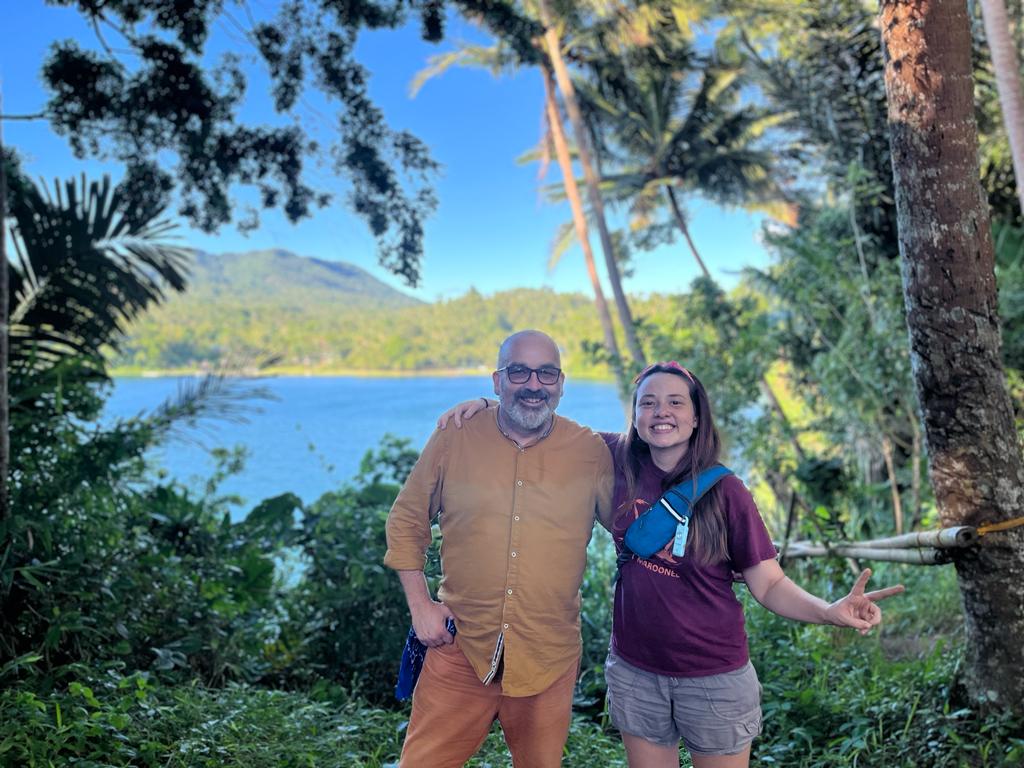

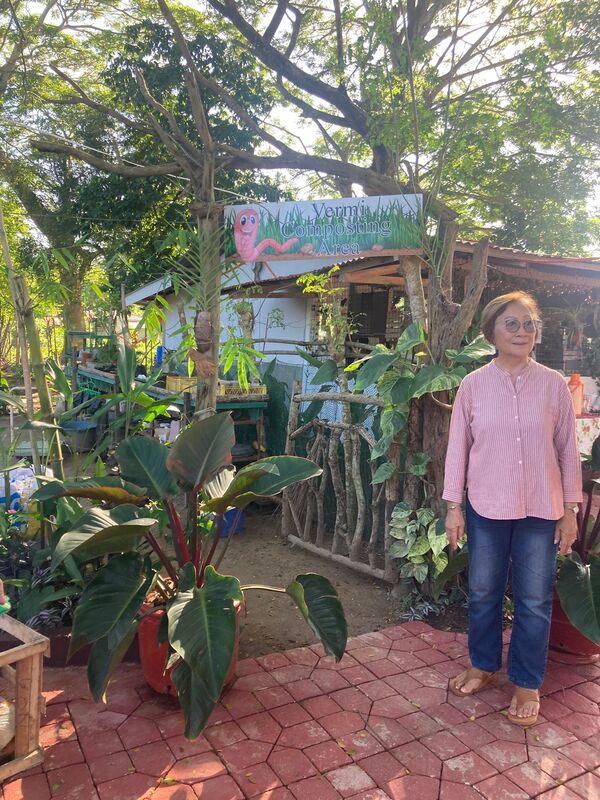
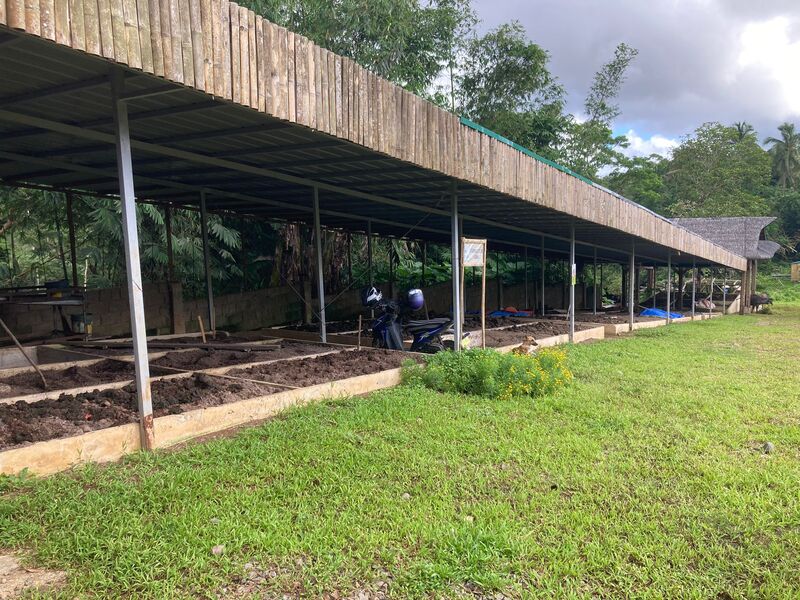
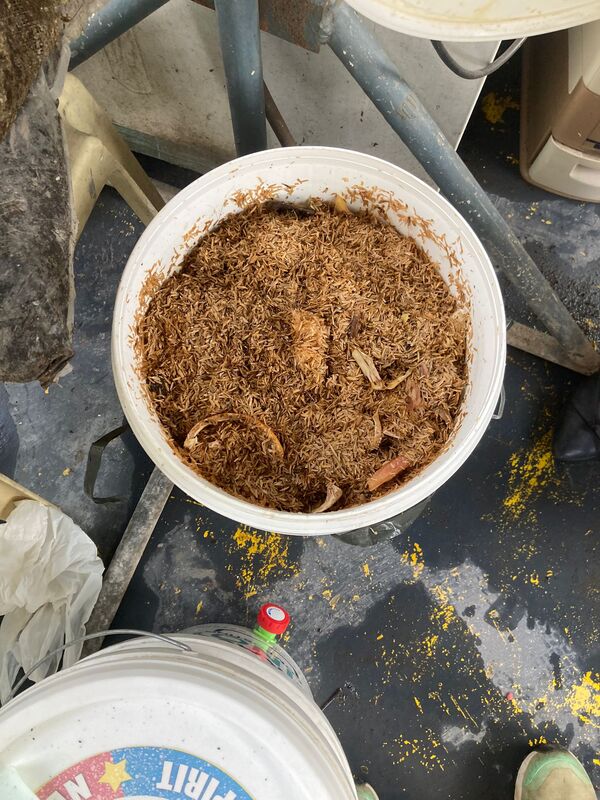
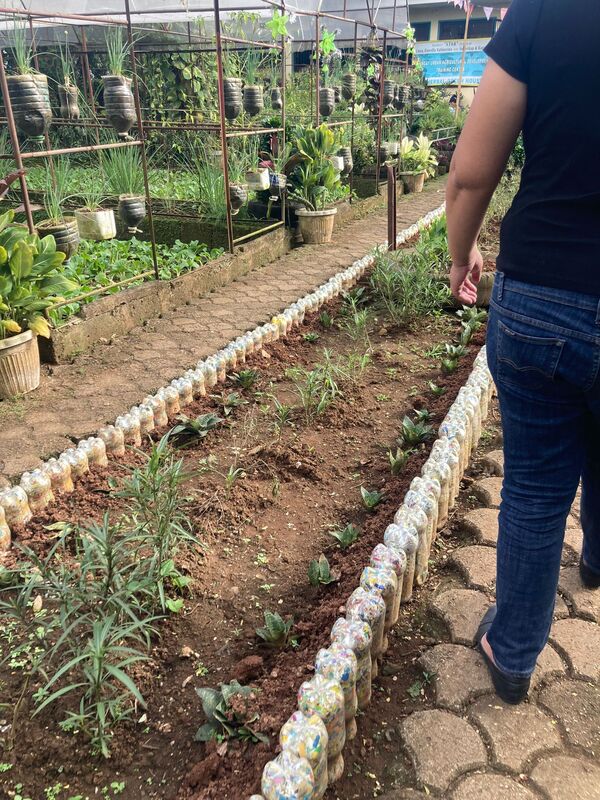
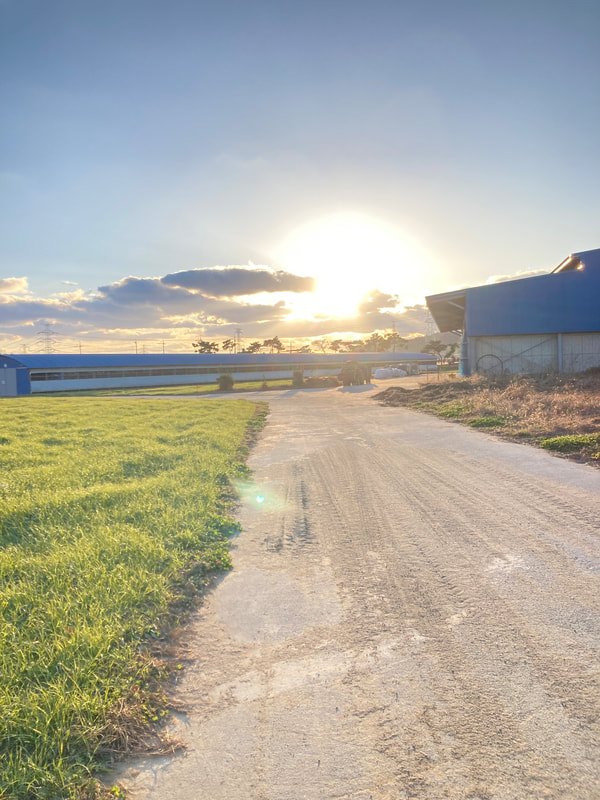
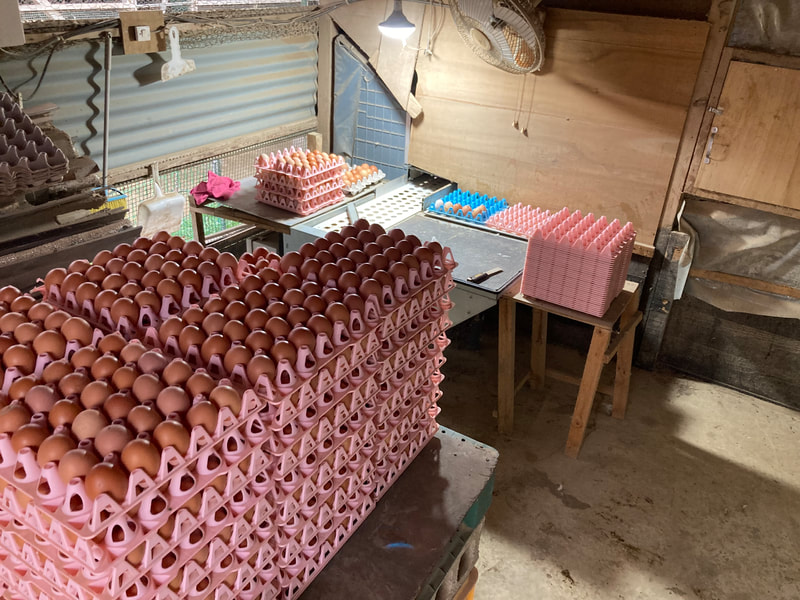
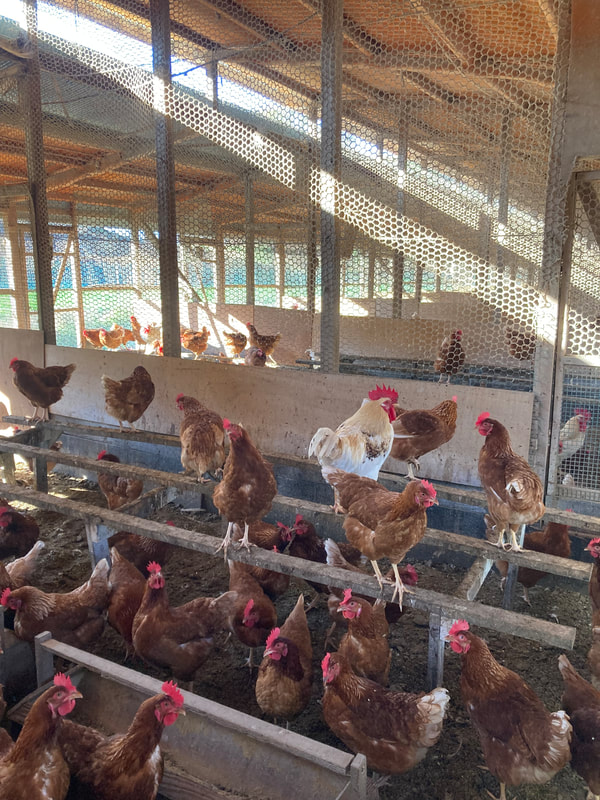
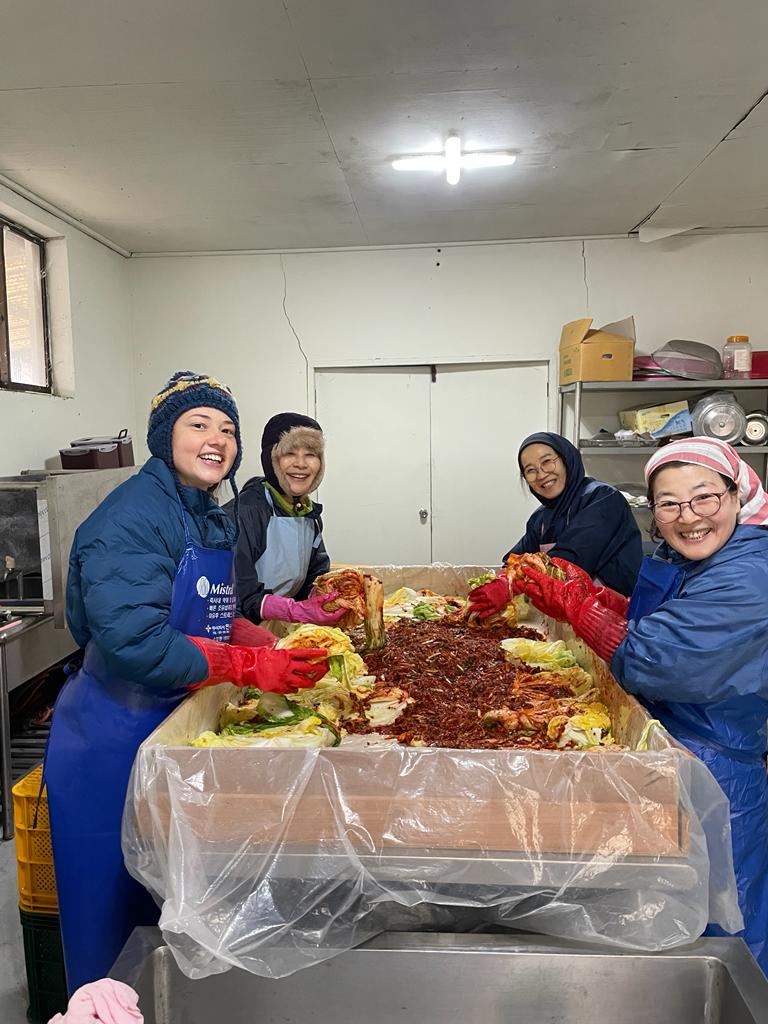

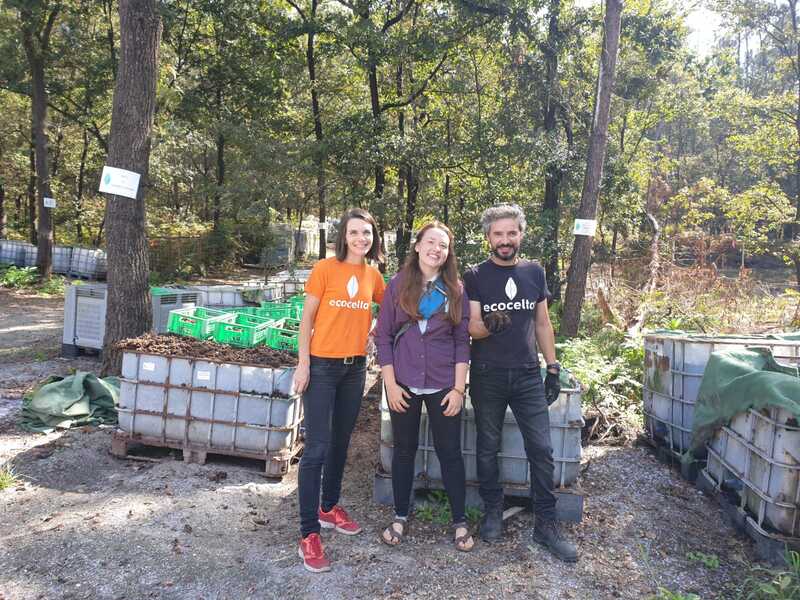
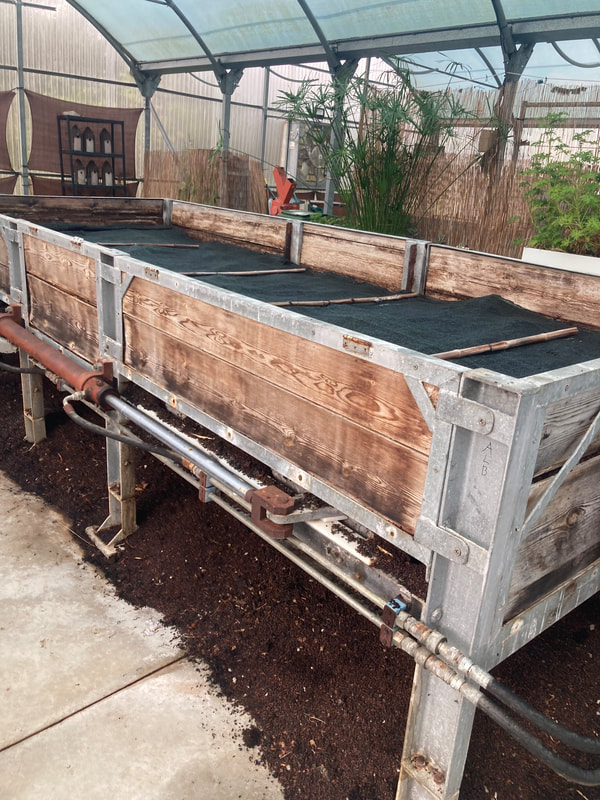
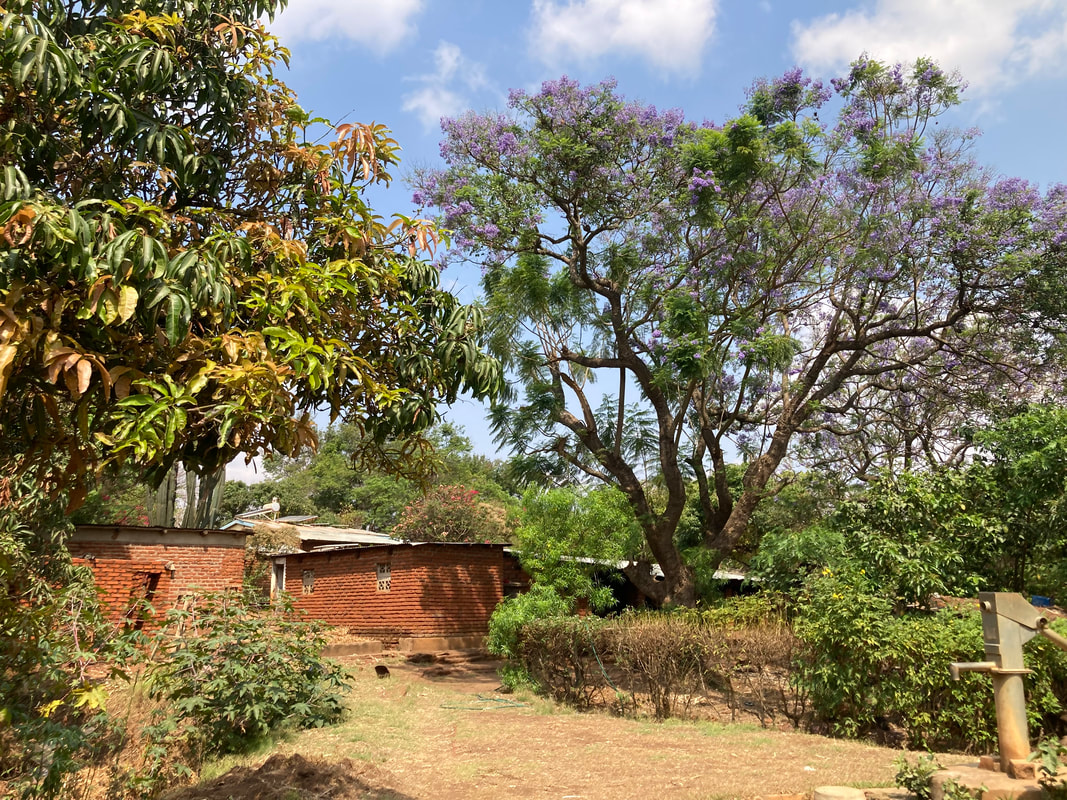
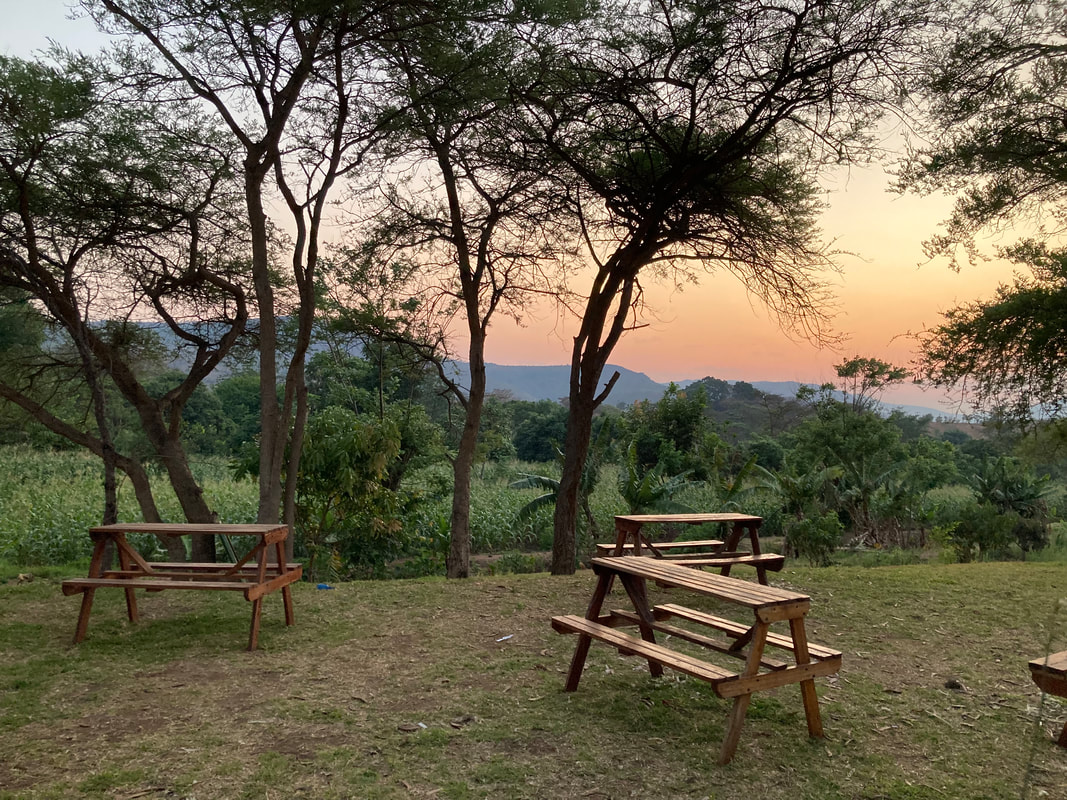
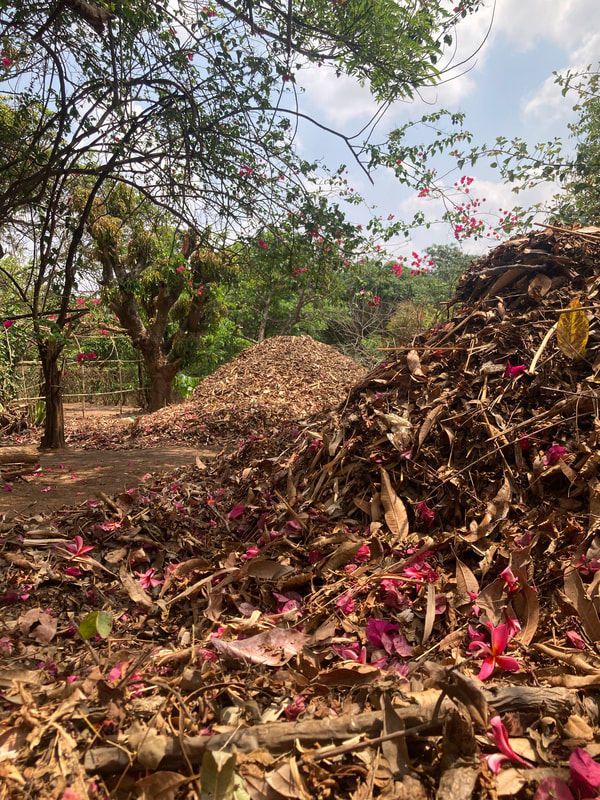
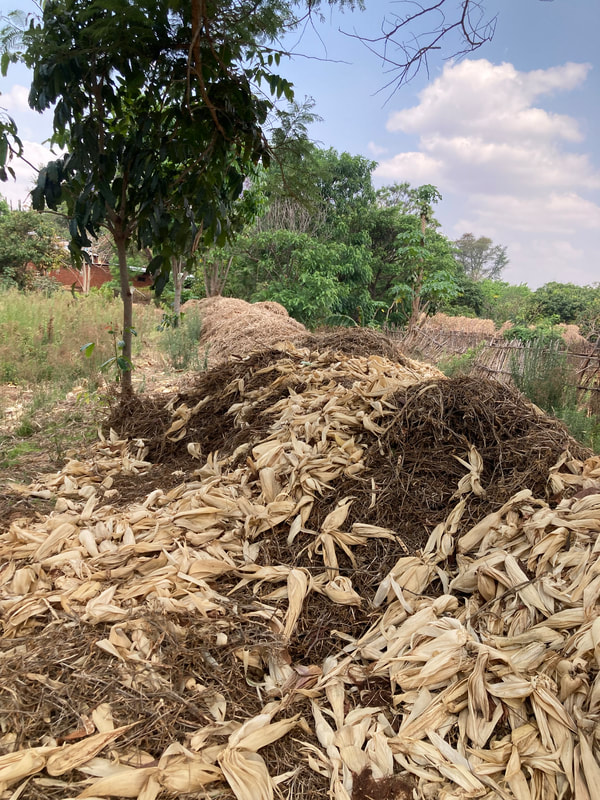
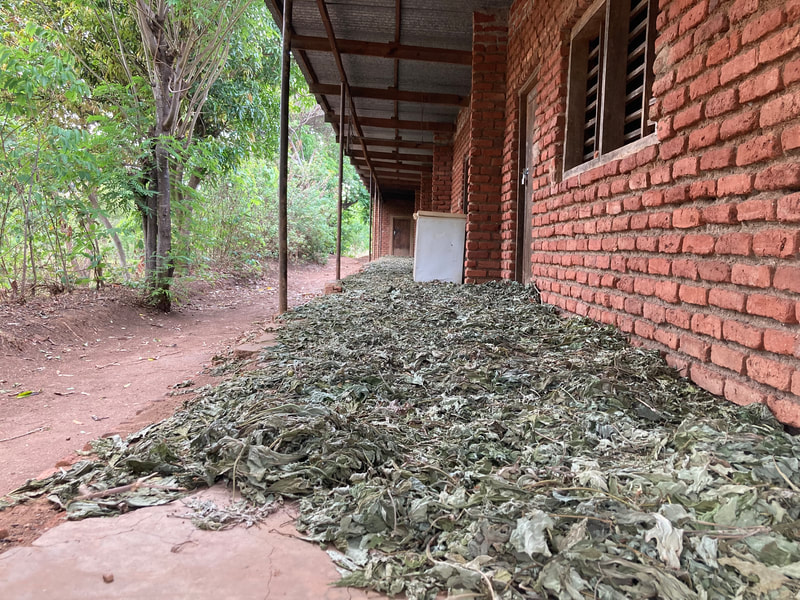
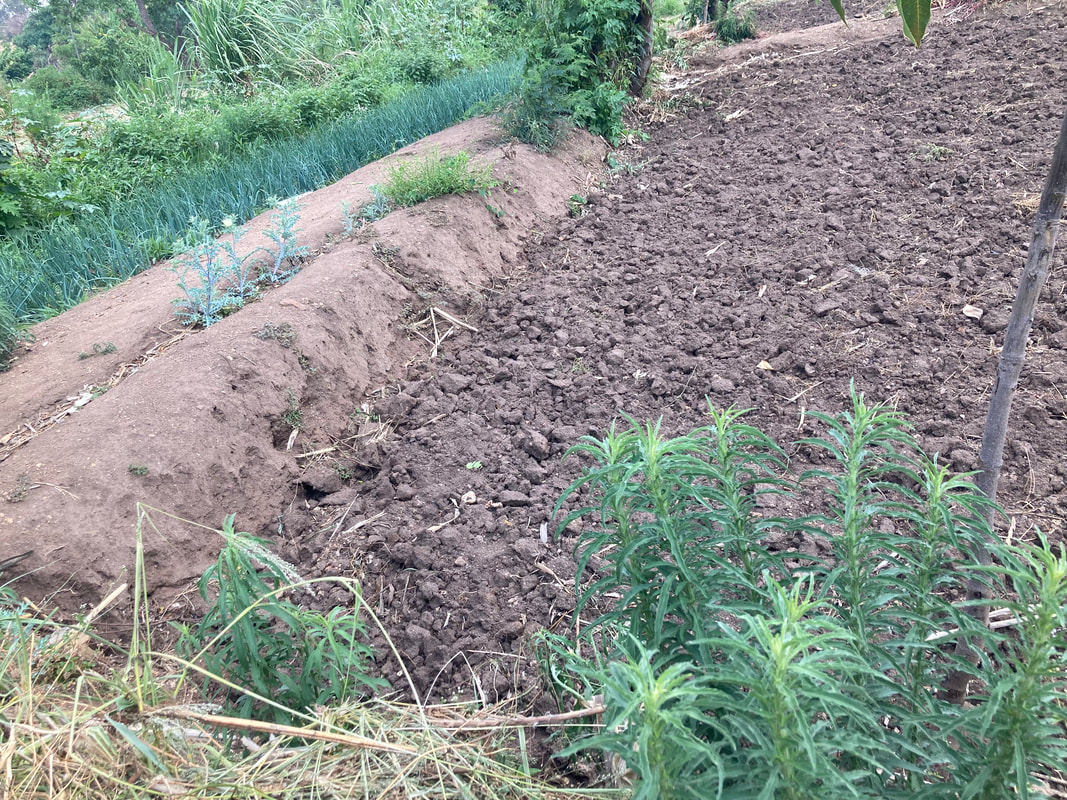
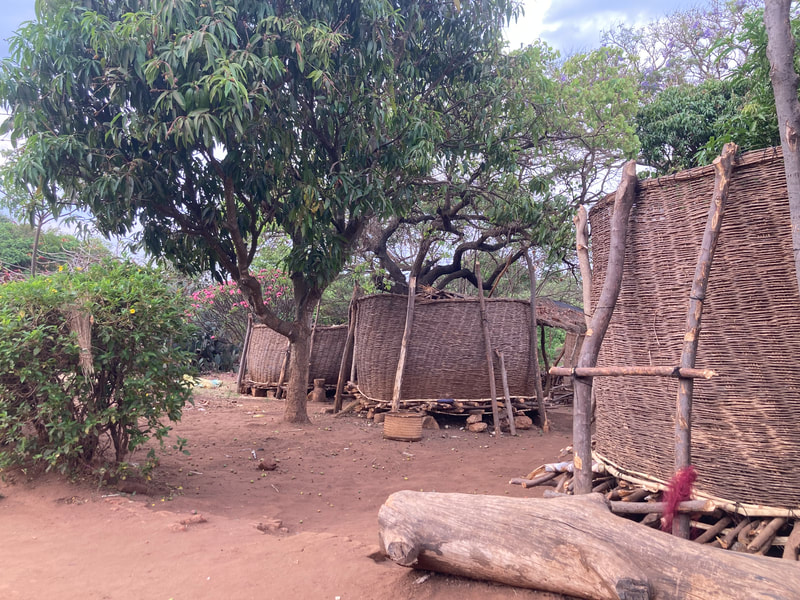
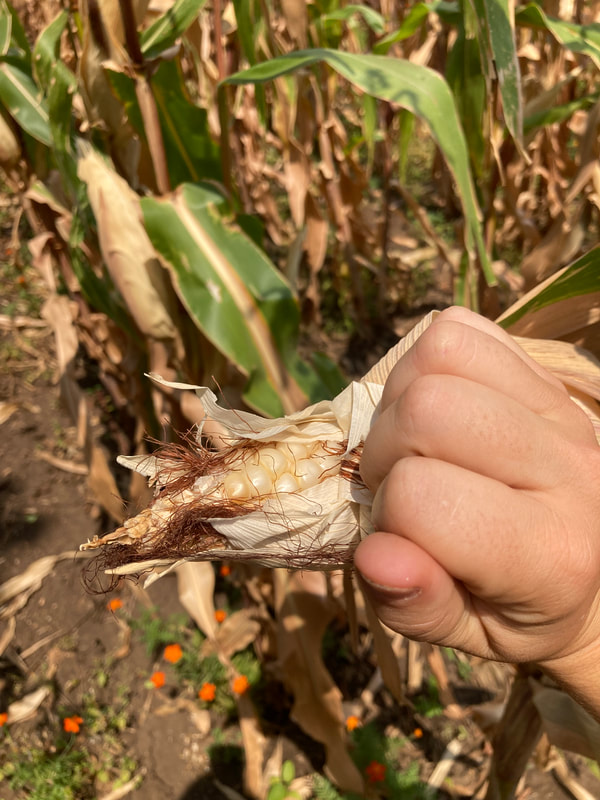
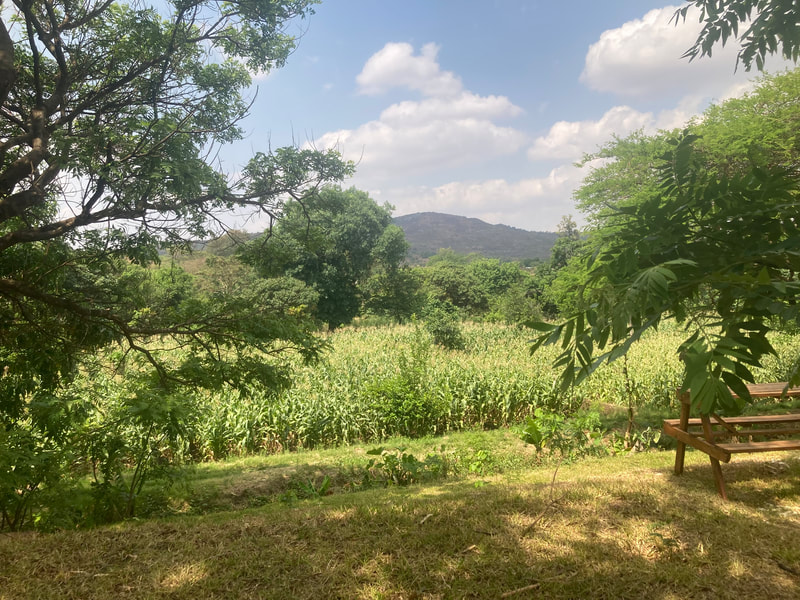
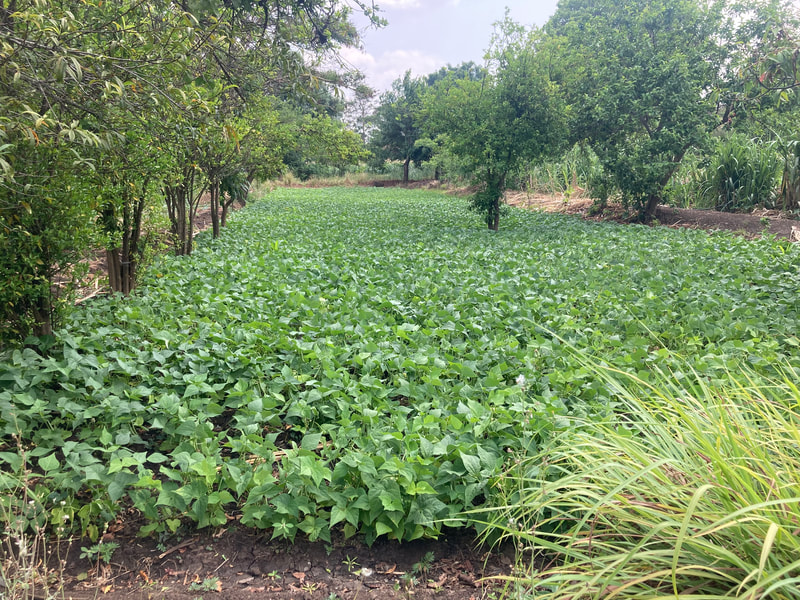
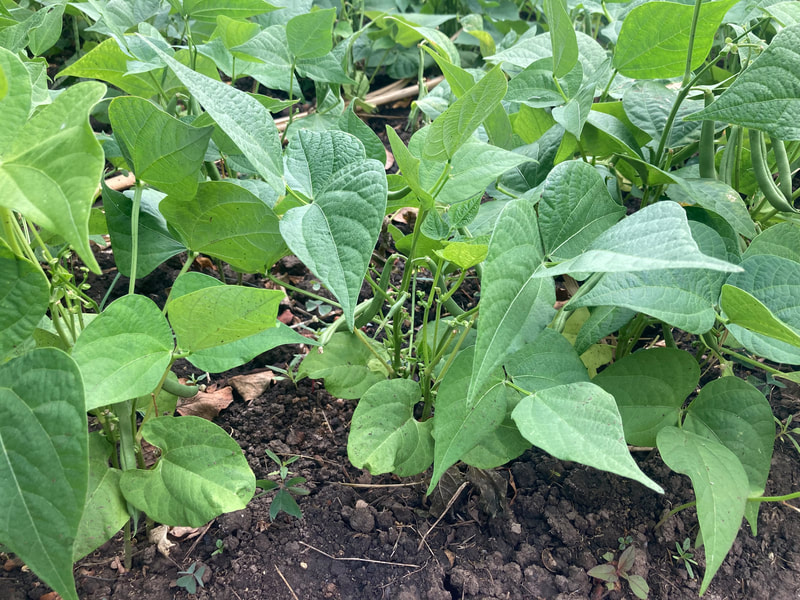
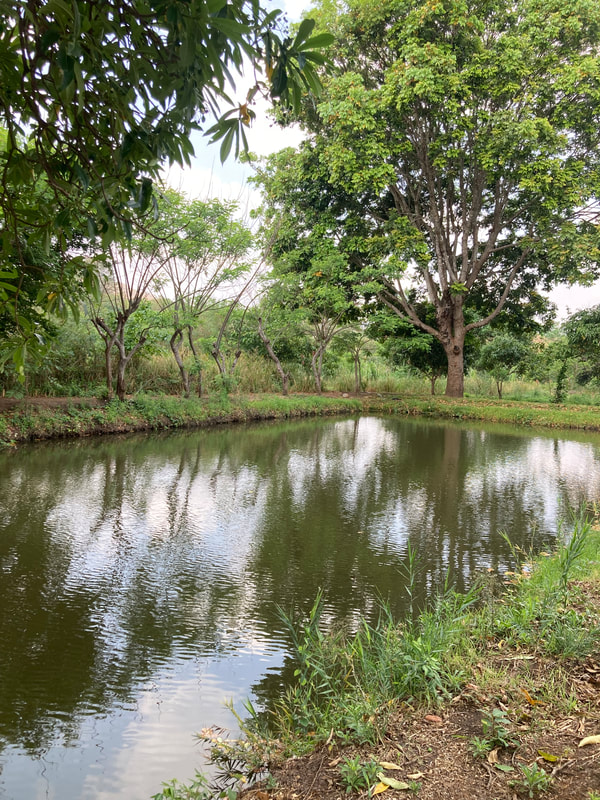
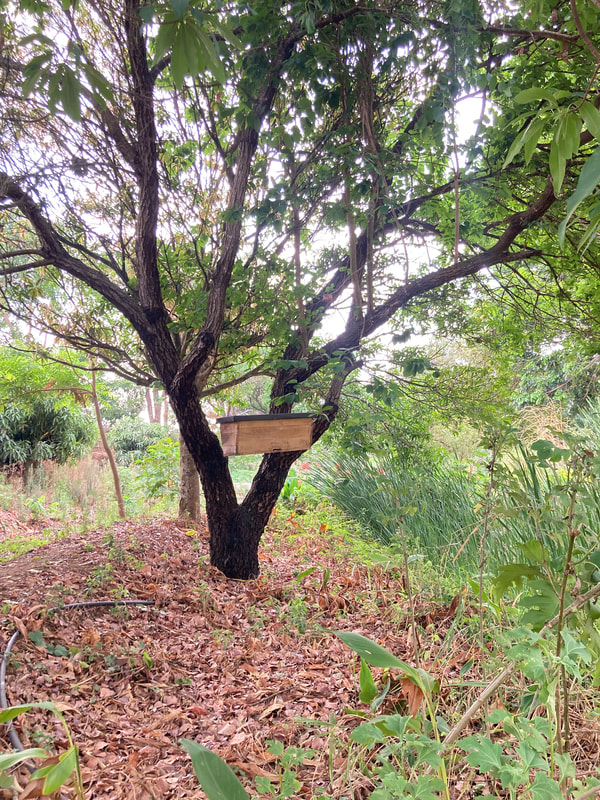
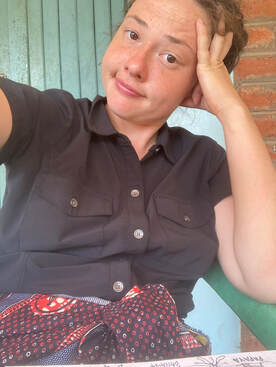

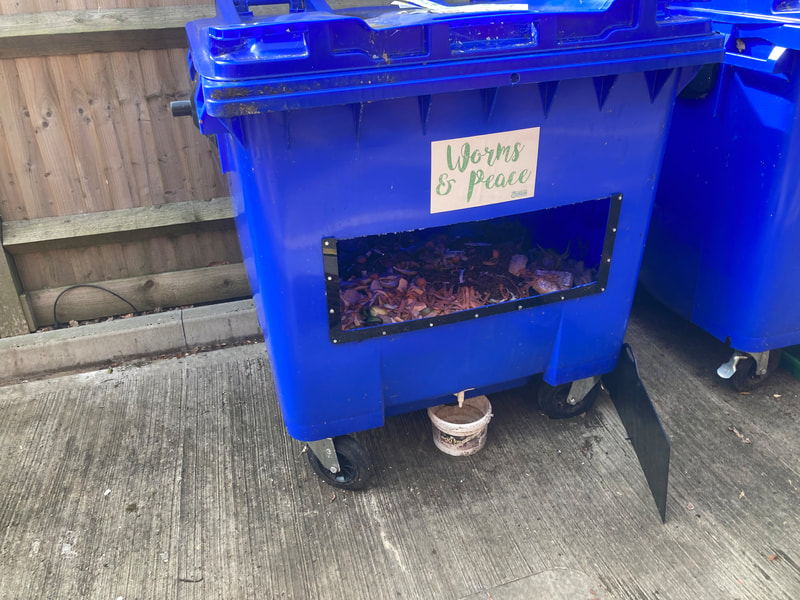
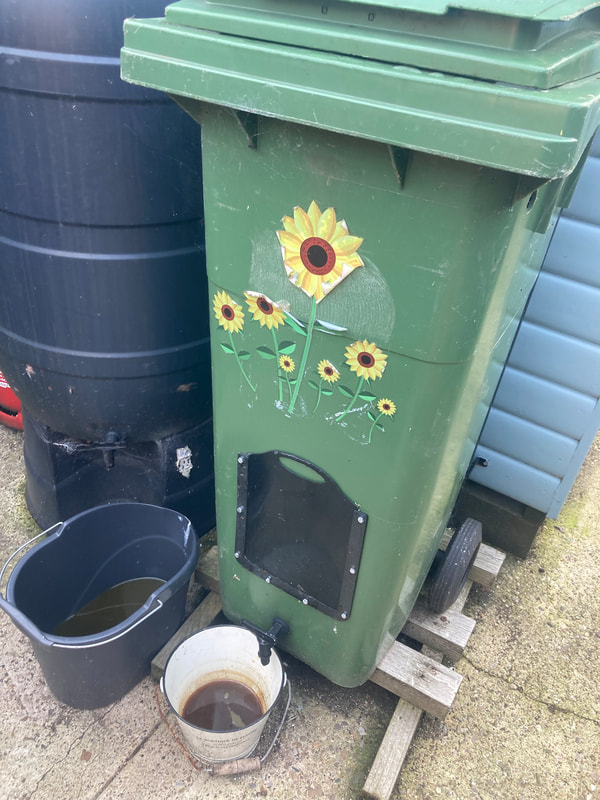
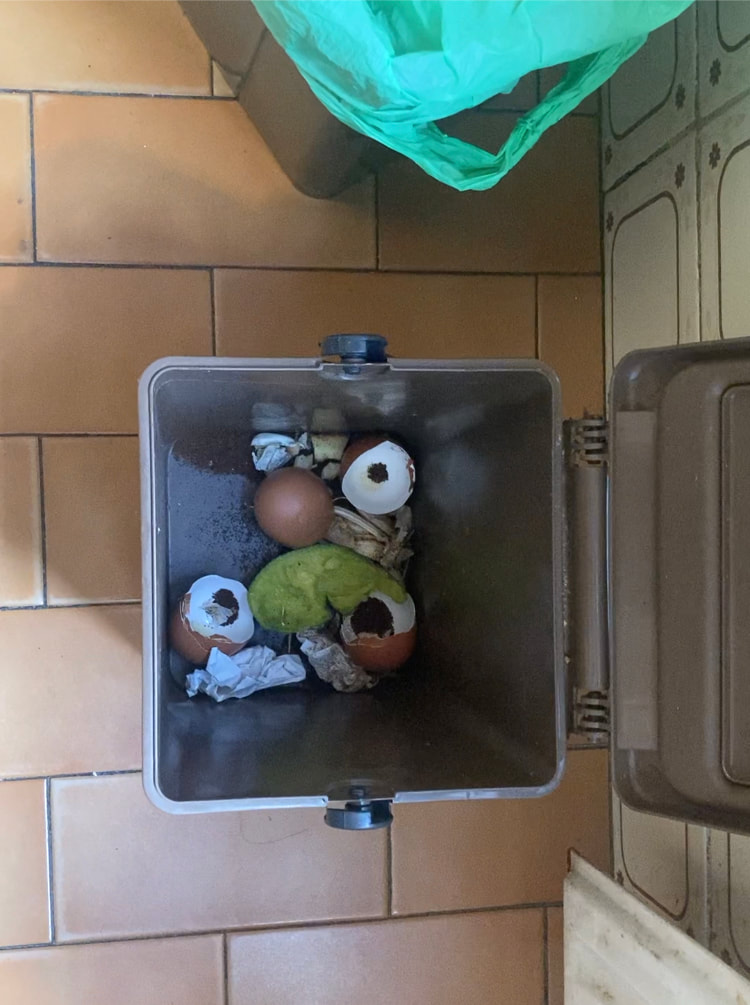
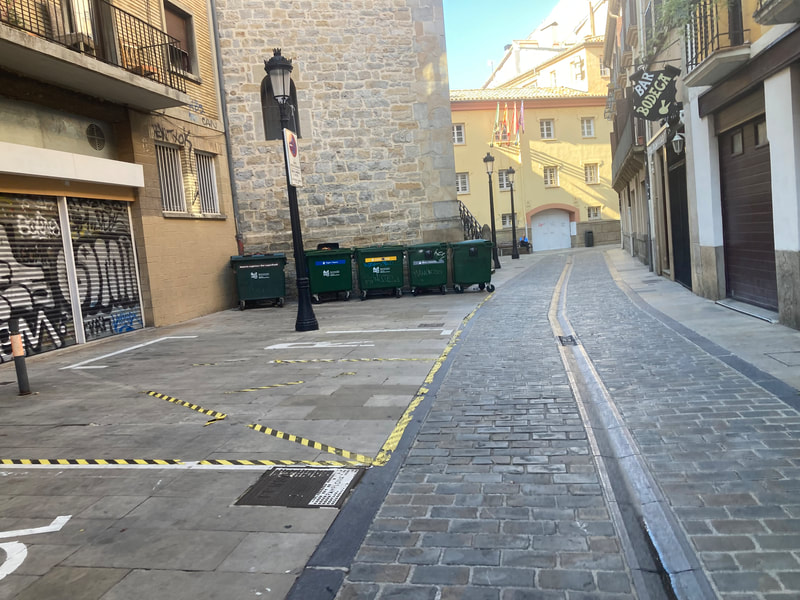
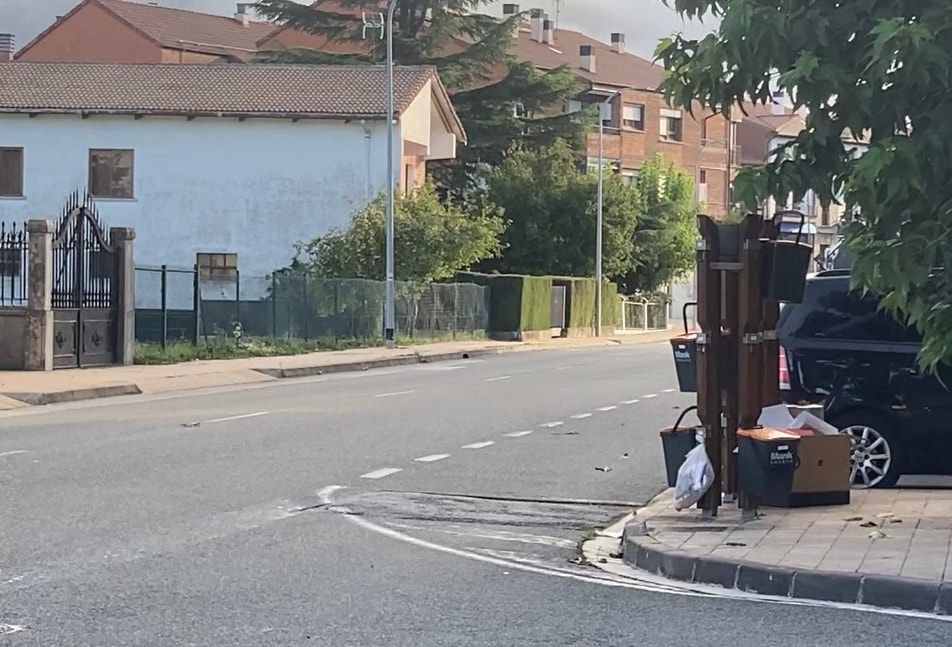
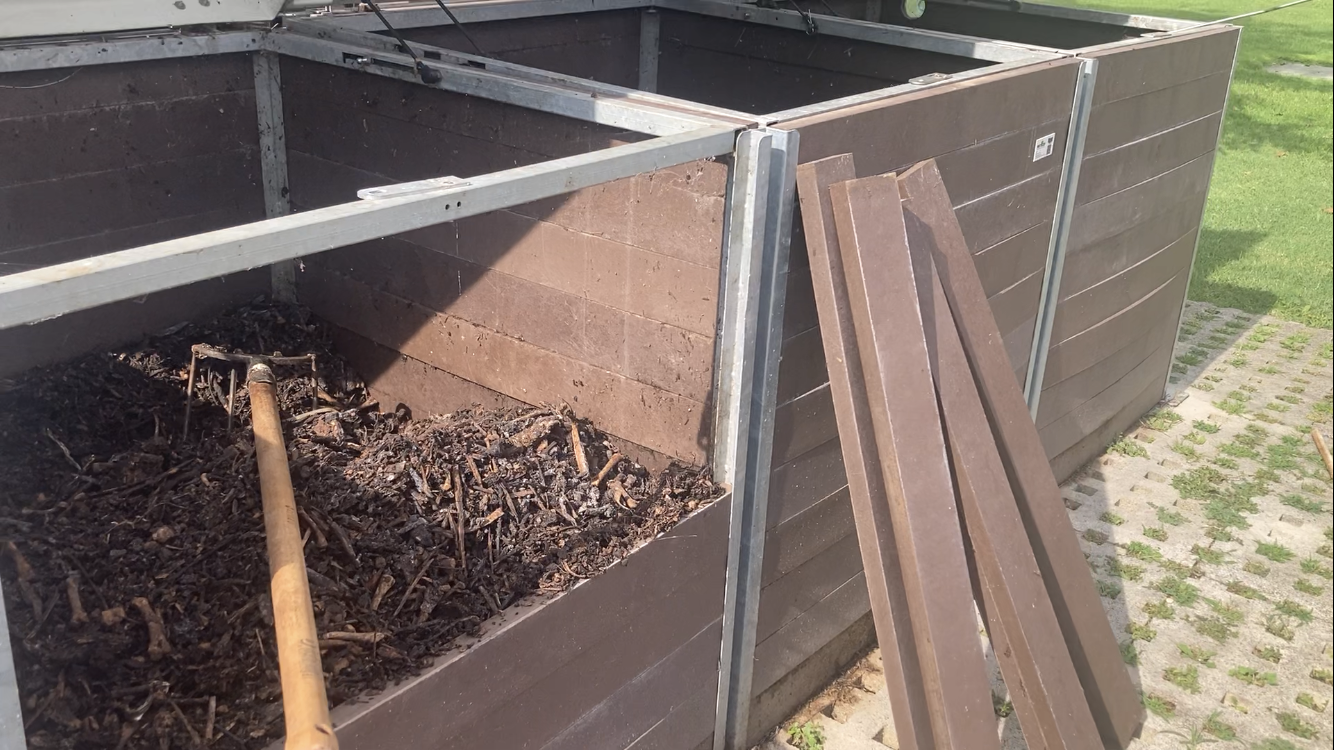
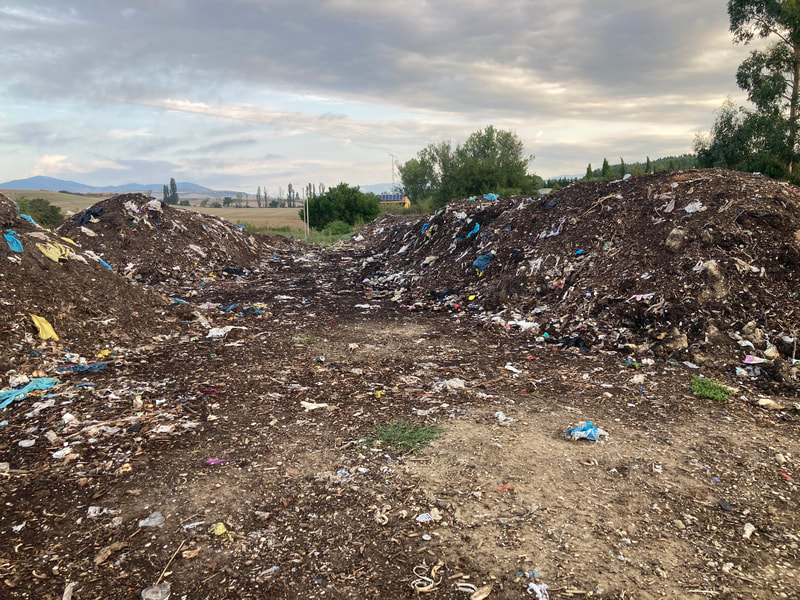
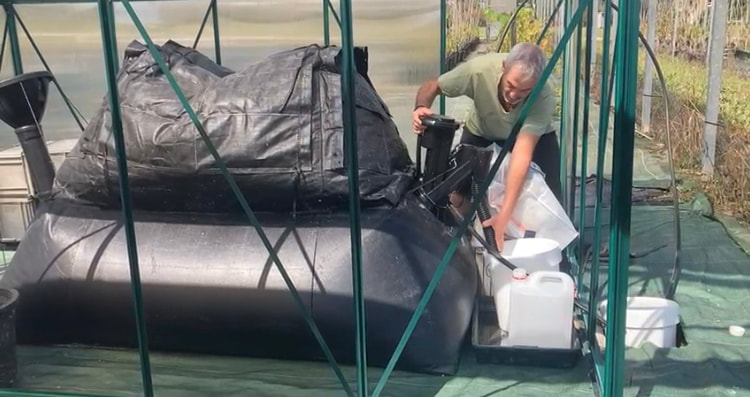
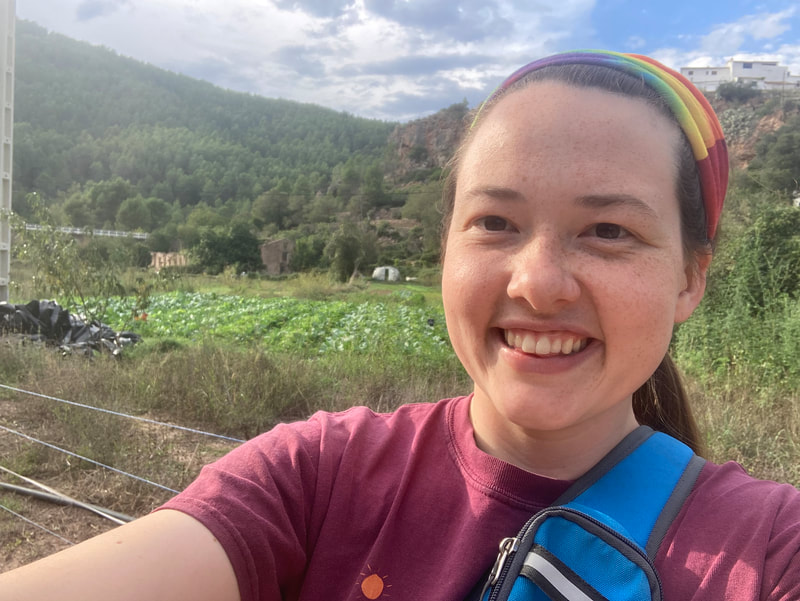
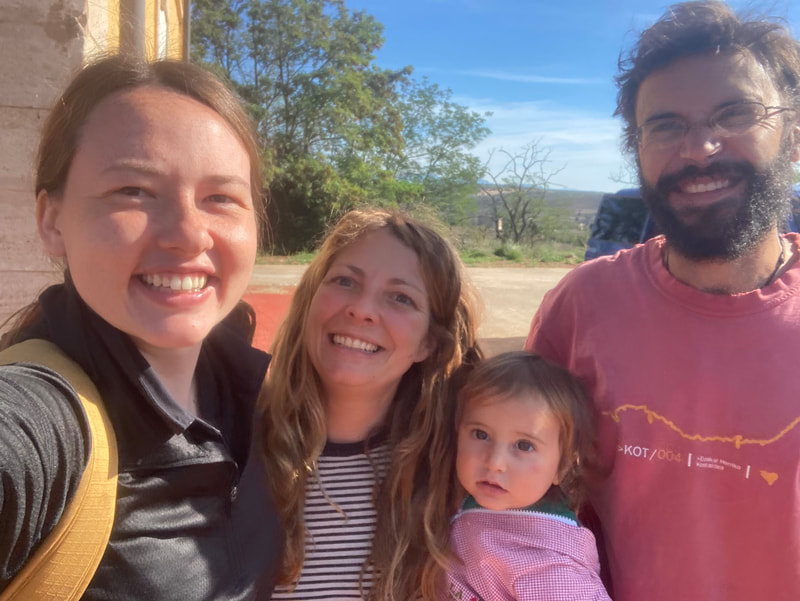

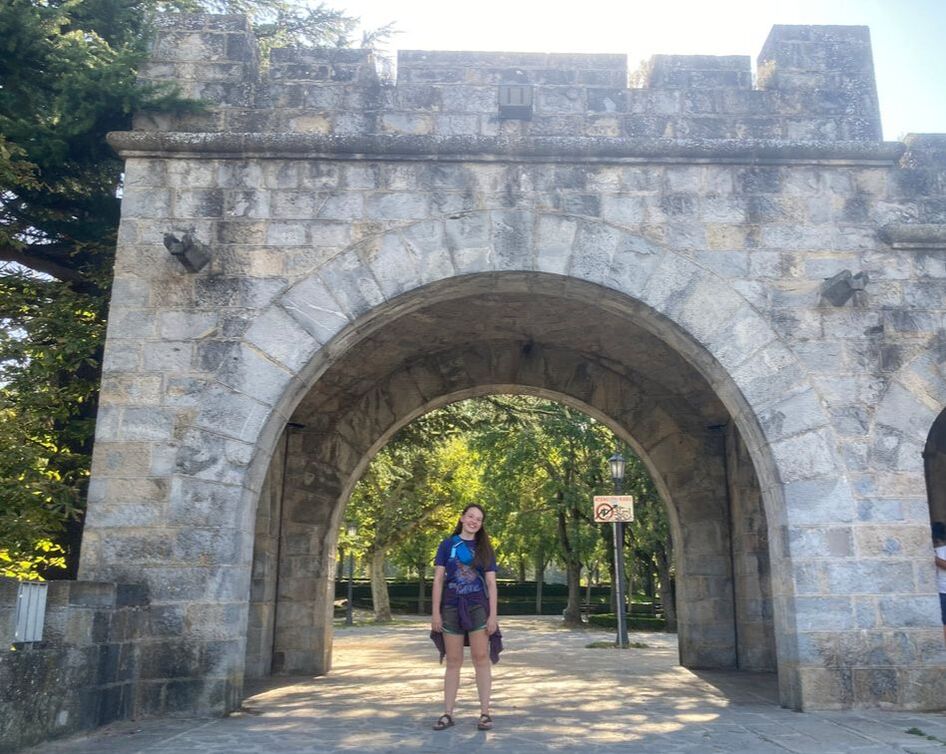

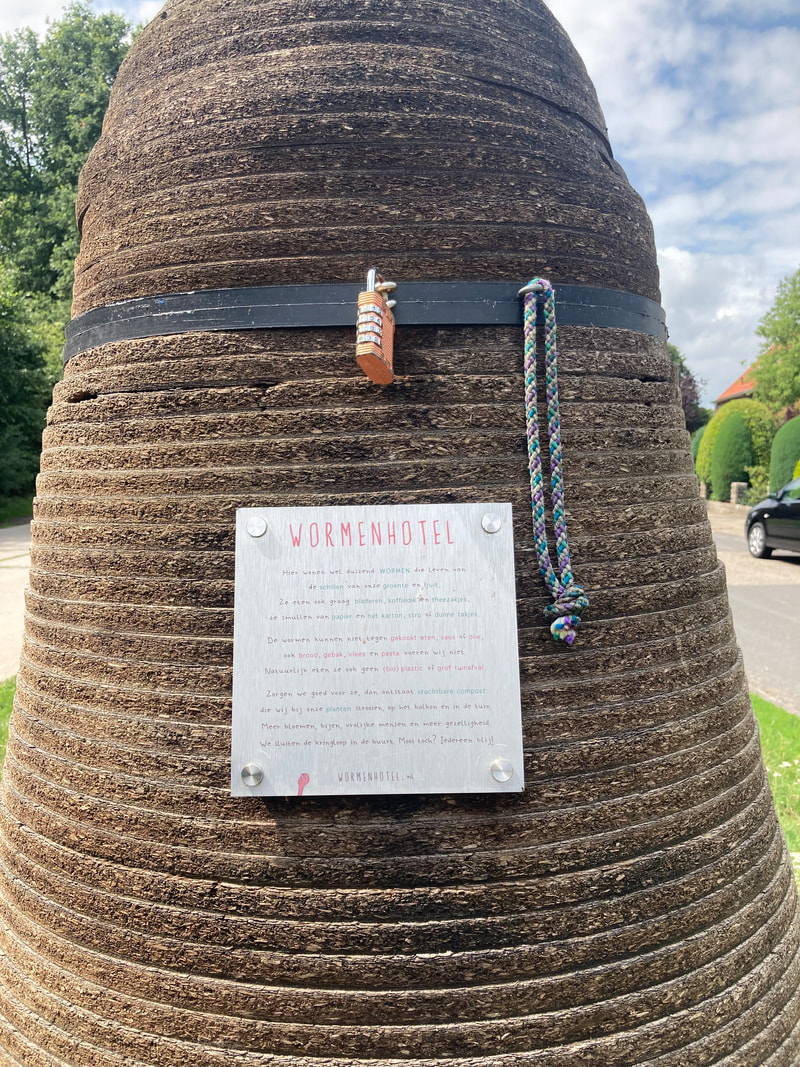
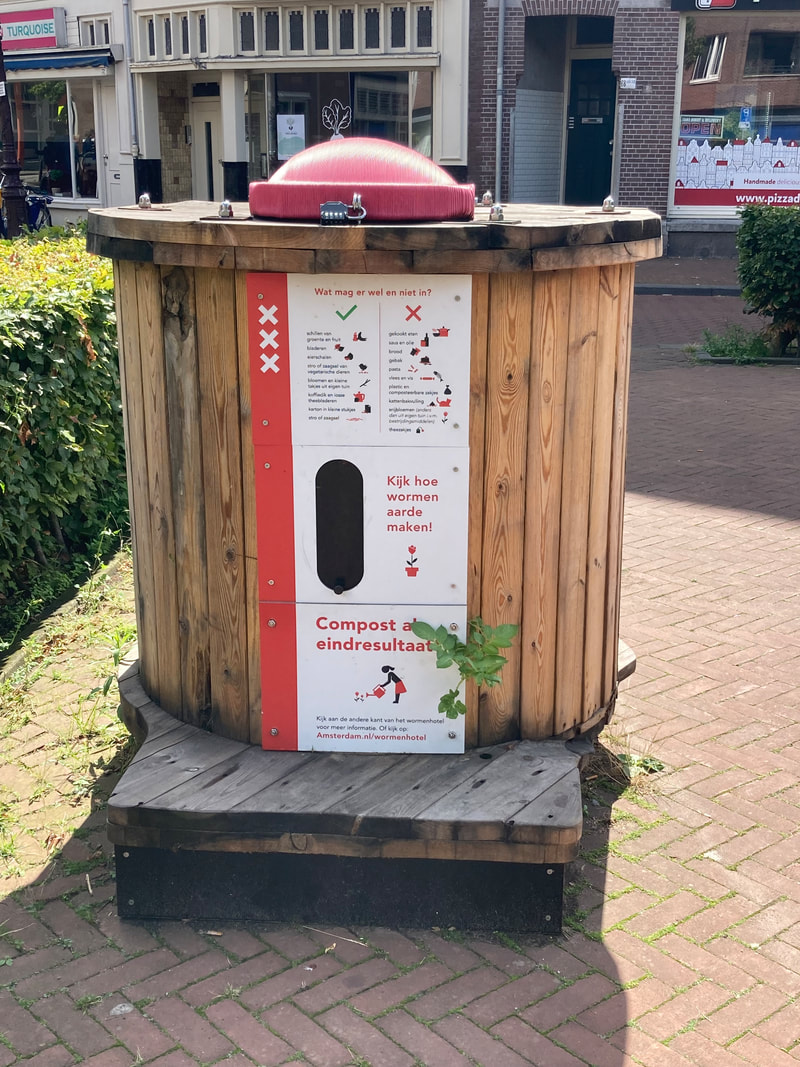
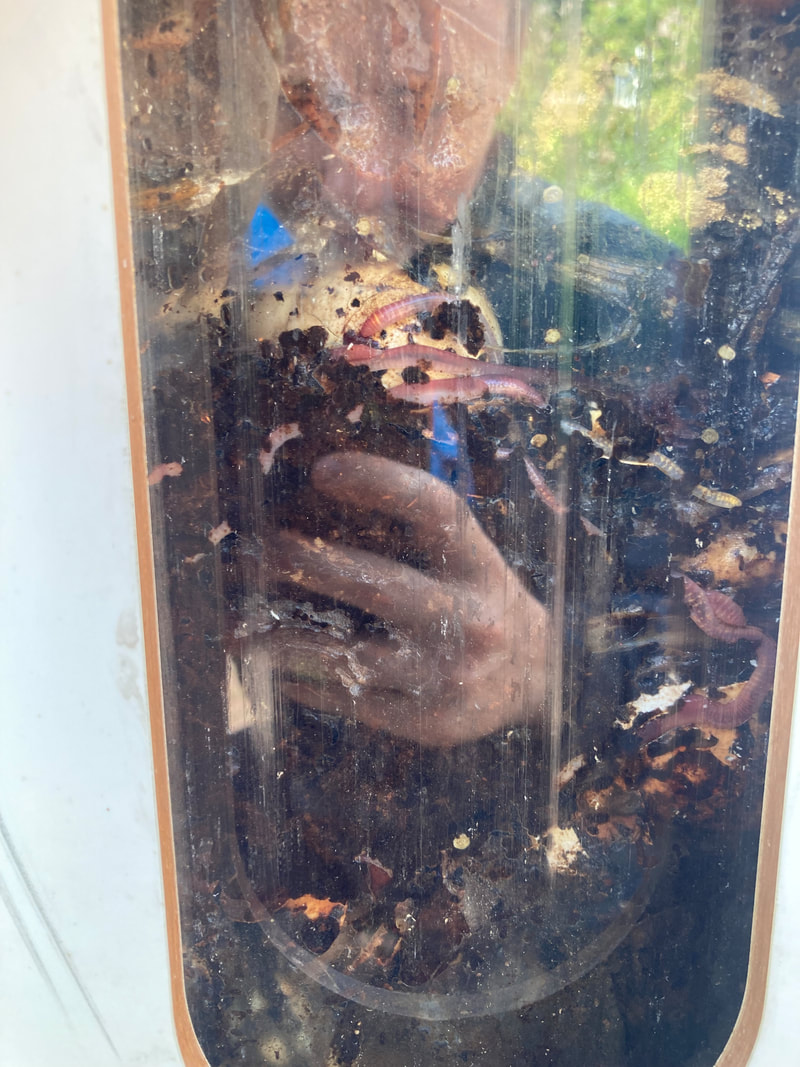
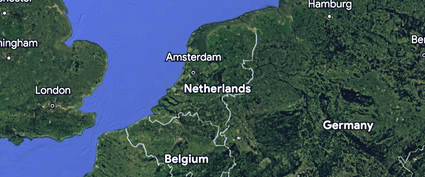
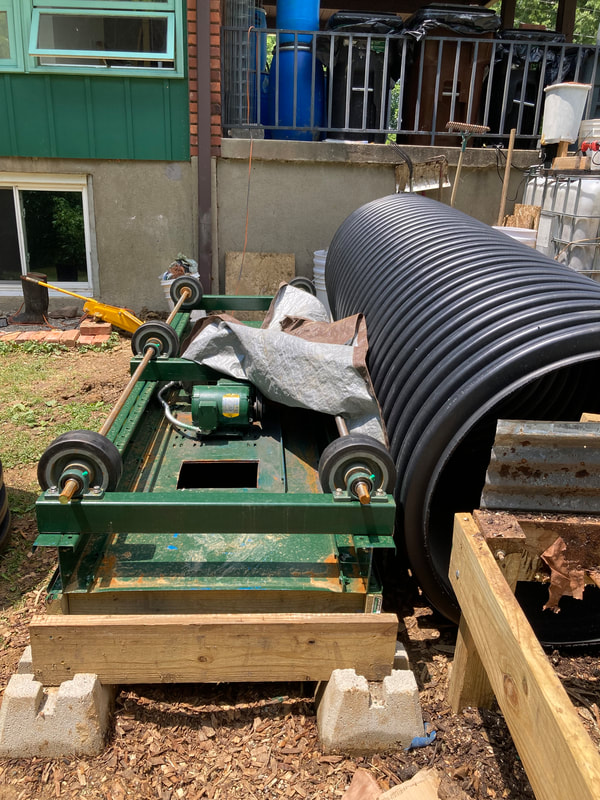
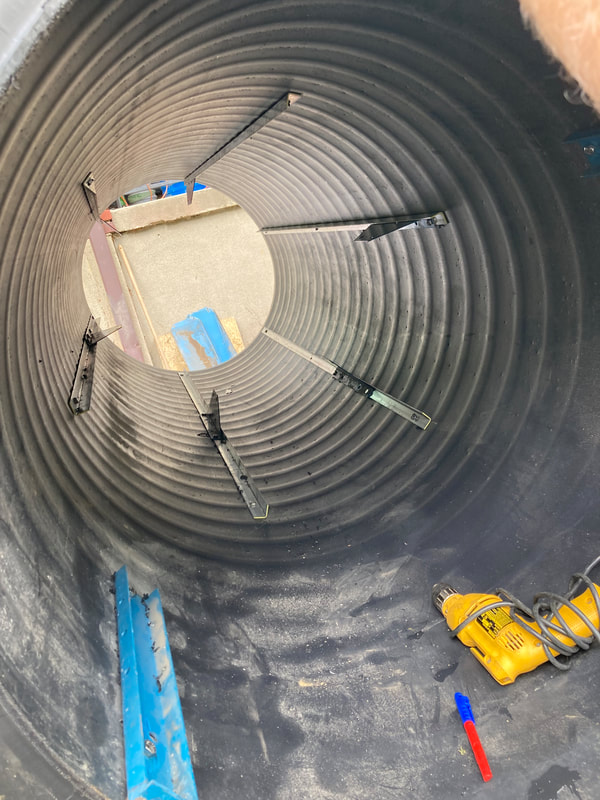
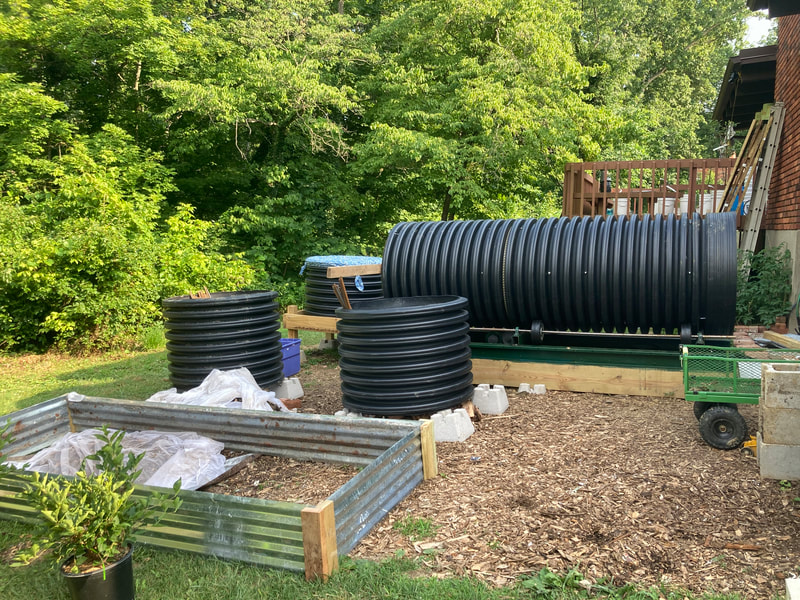
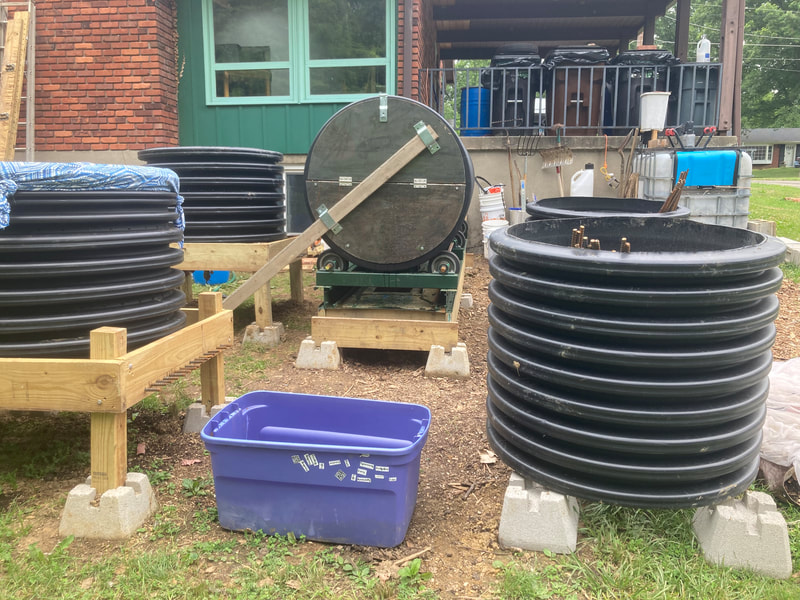
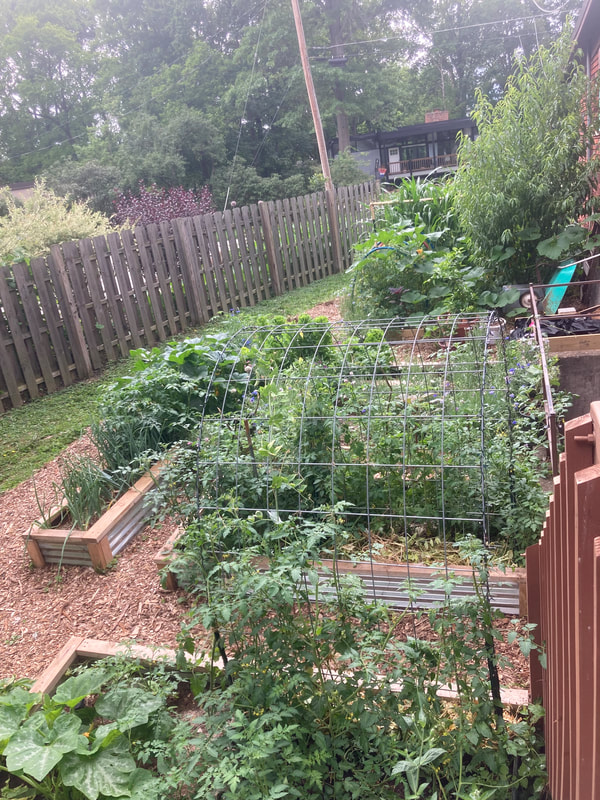
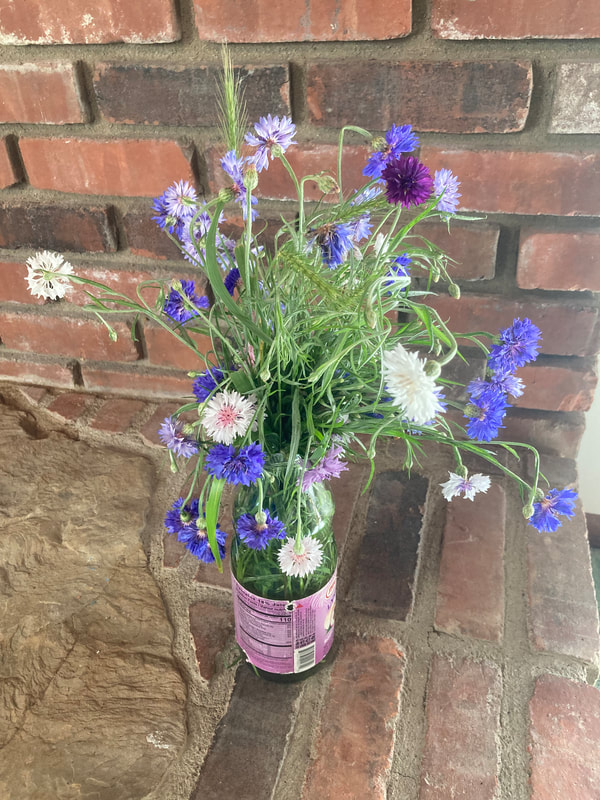
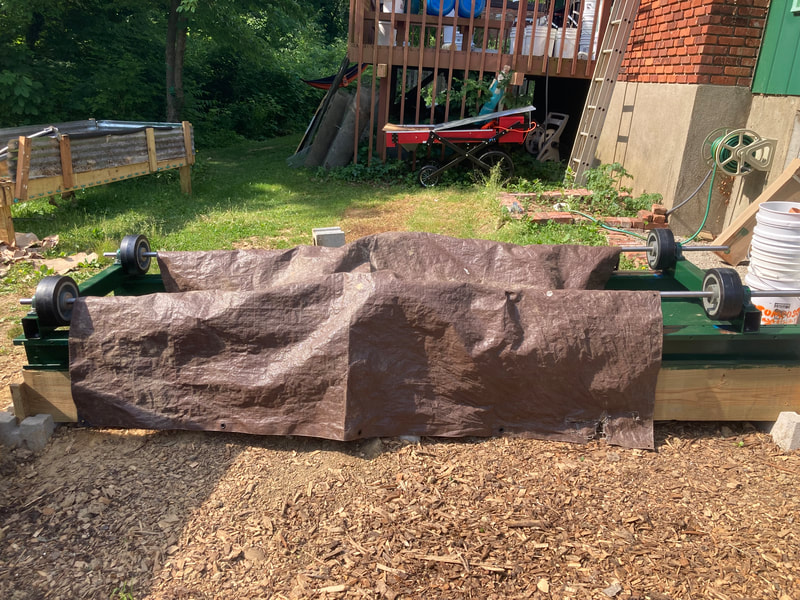
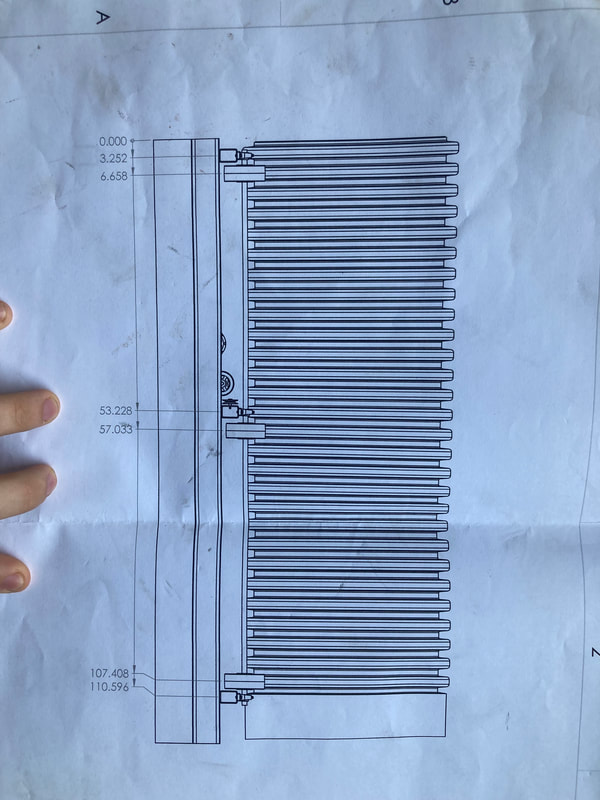
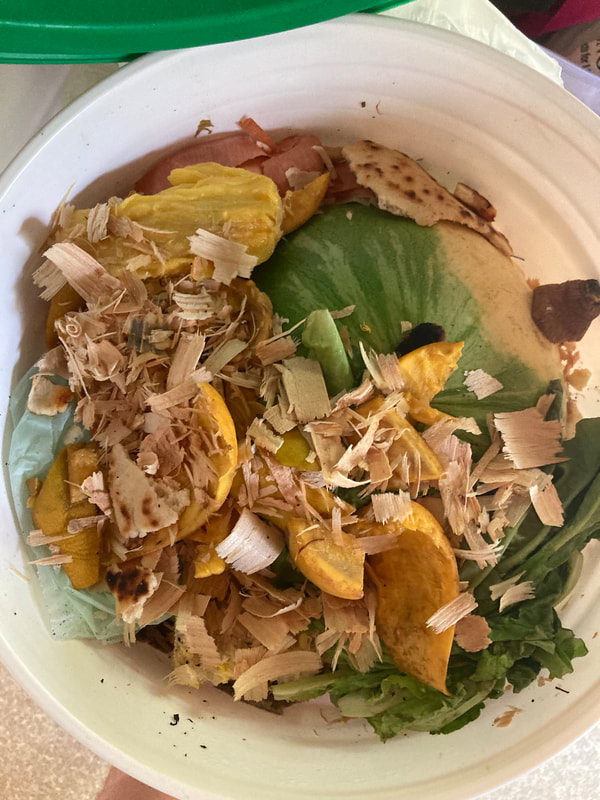
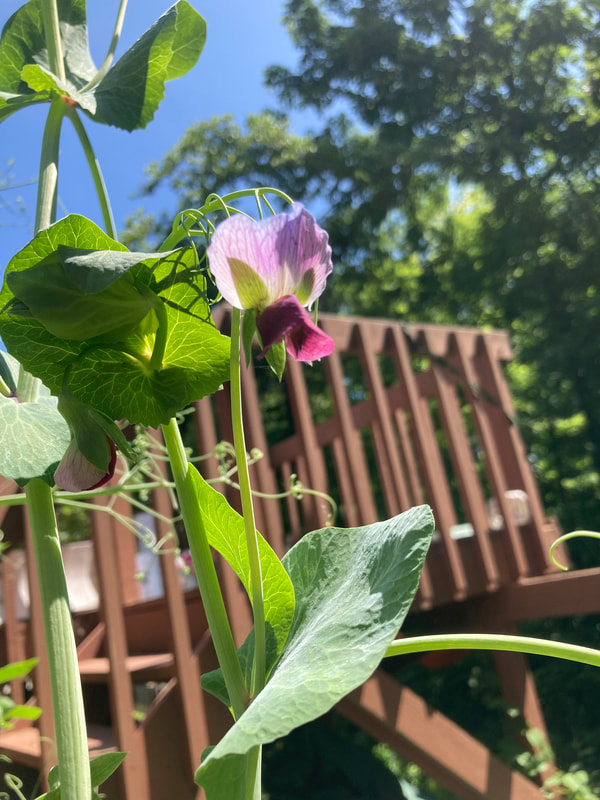
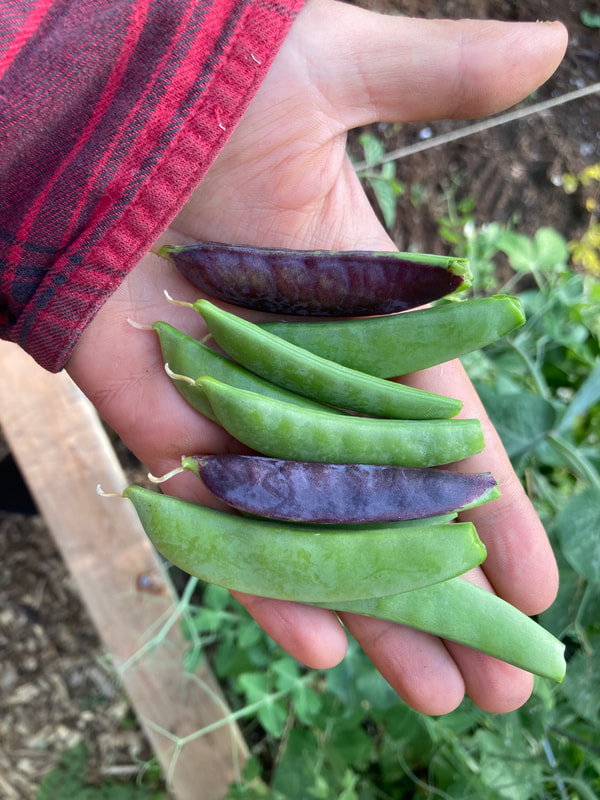
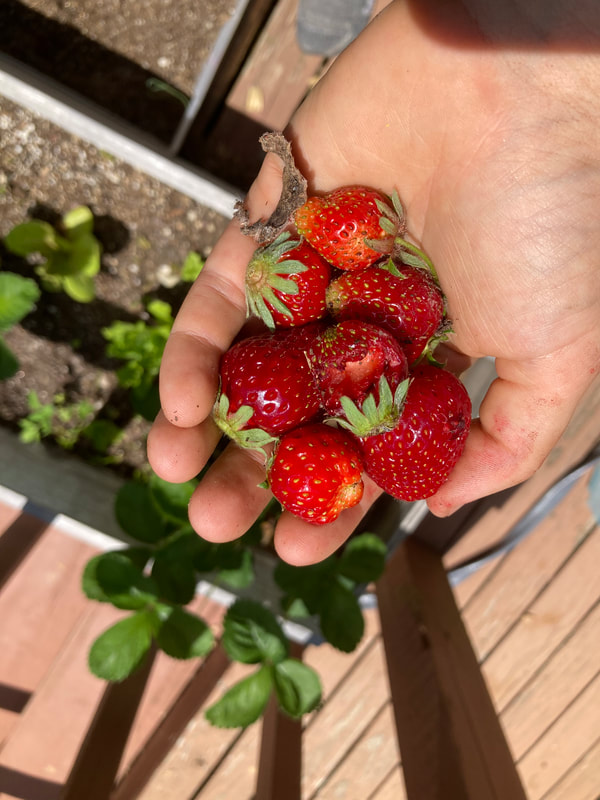
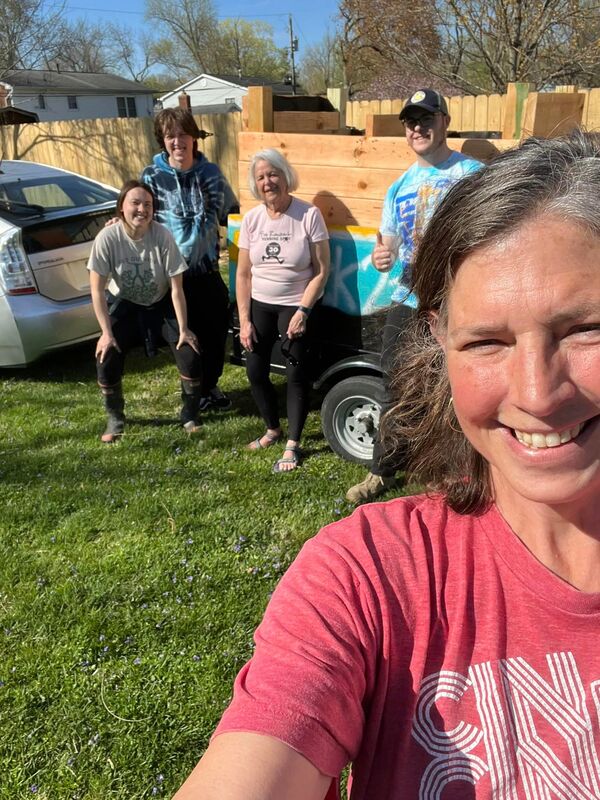
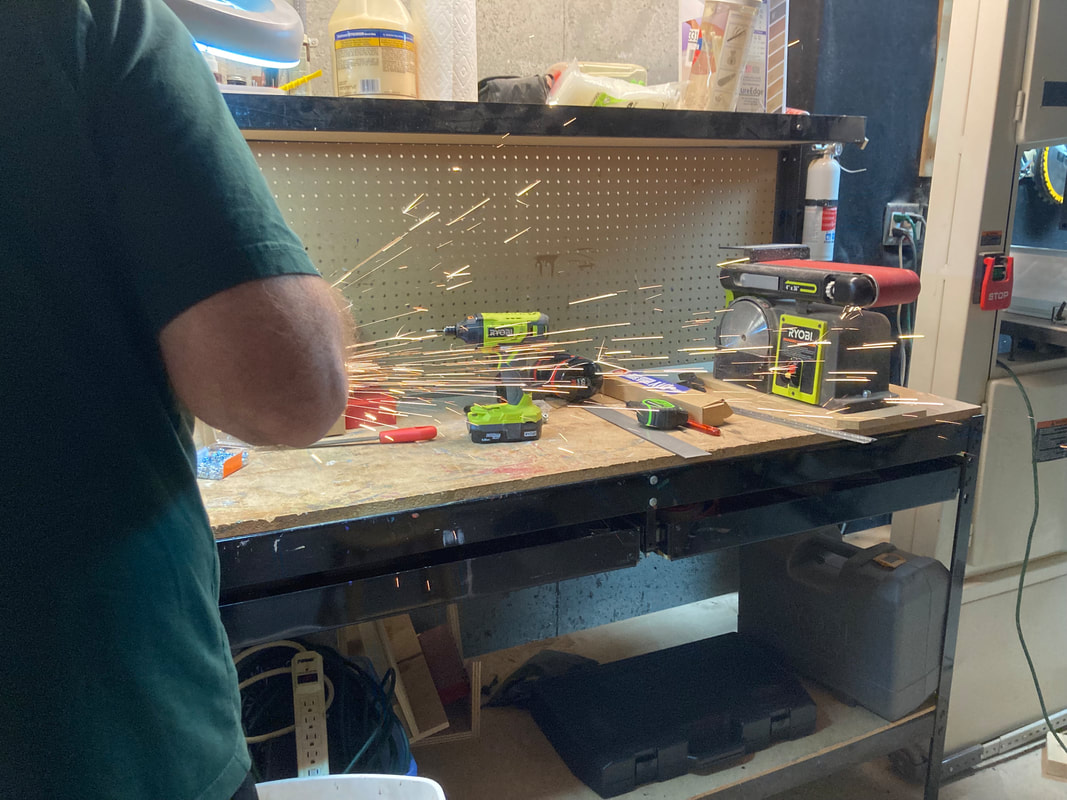
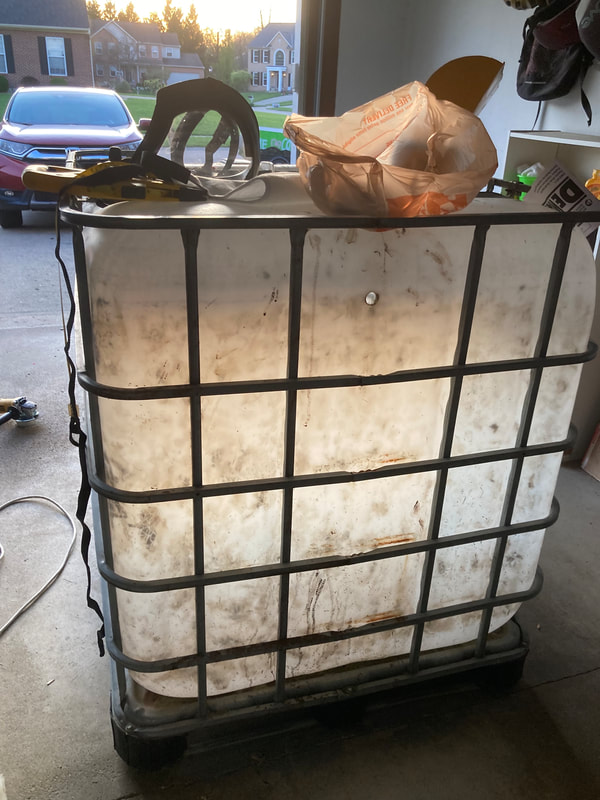
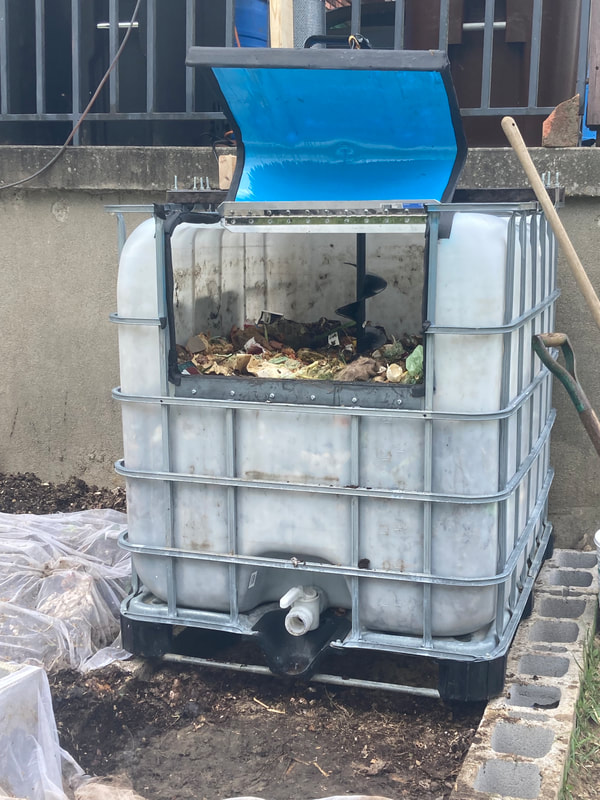
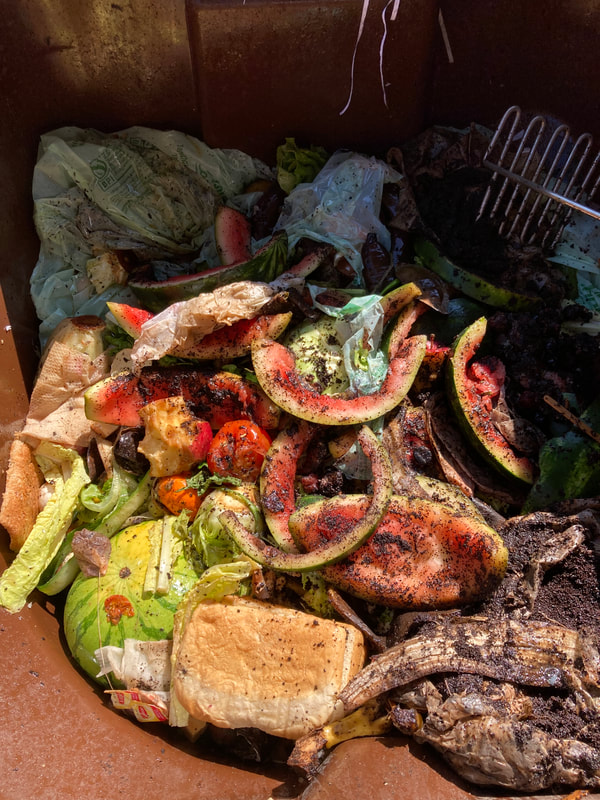
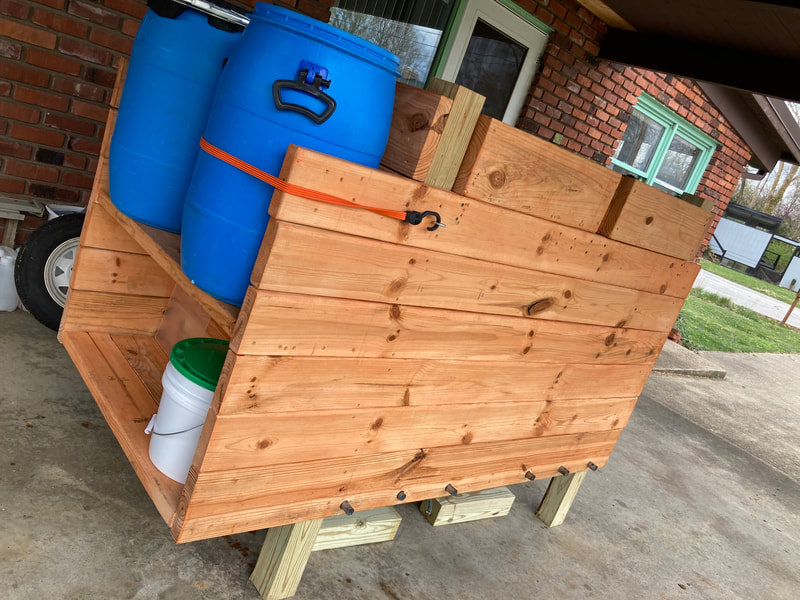
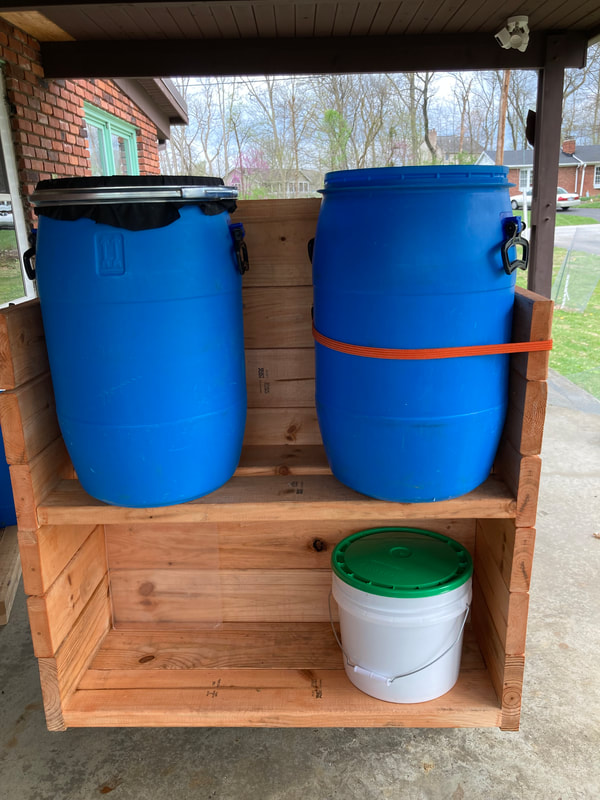
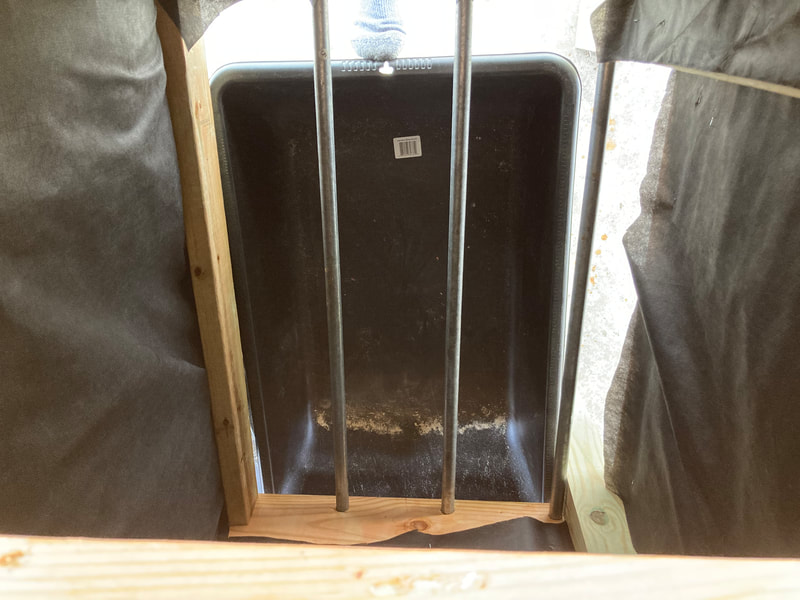
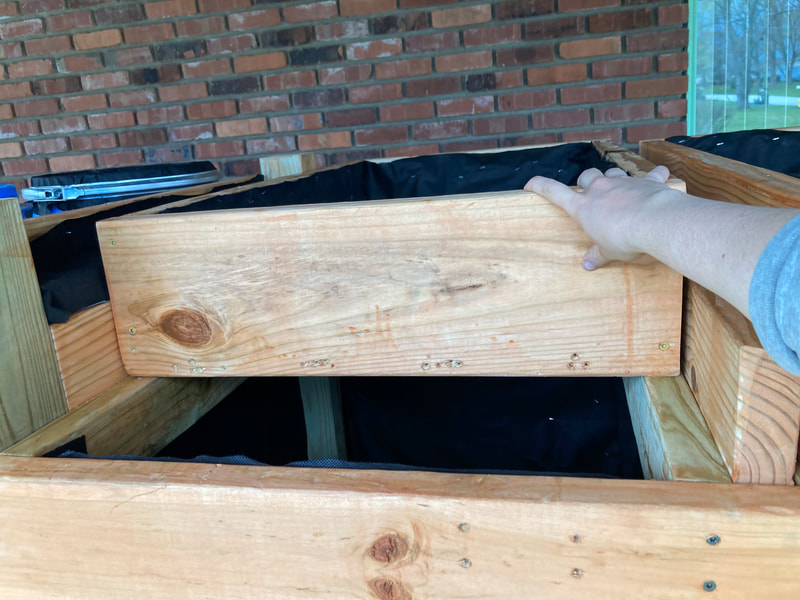
 RSS Feed
RSS Feed